Timelapse Photos With Your Camera - - - - the Easy Way - - - -
by Constructer in Craft > Photography
40885 Views, 139 Favorites, 0 Comments
Timelapse Photos With Your Camera - - - - the Easy Way - - - -
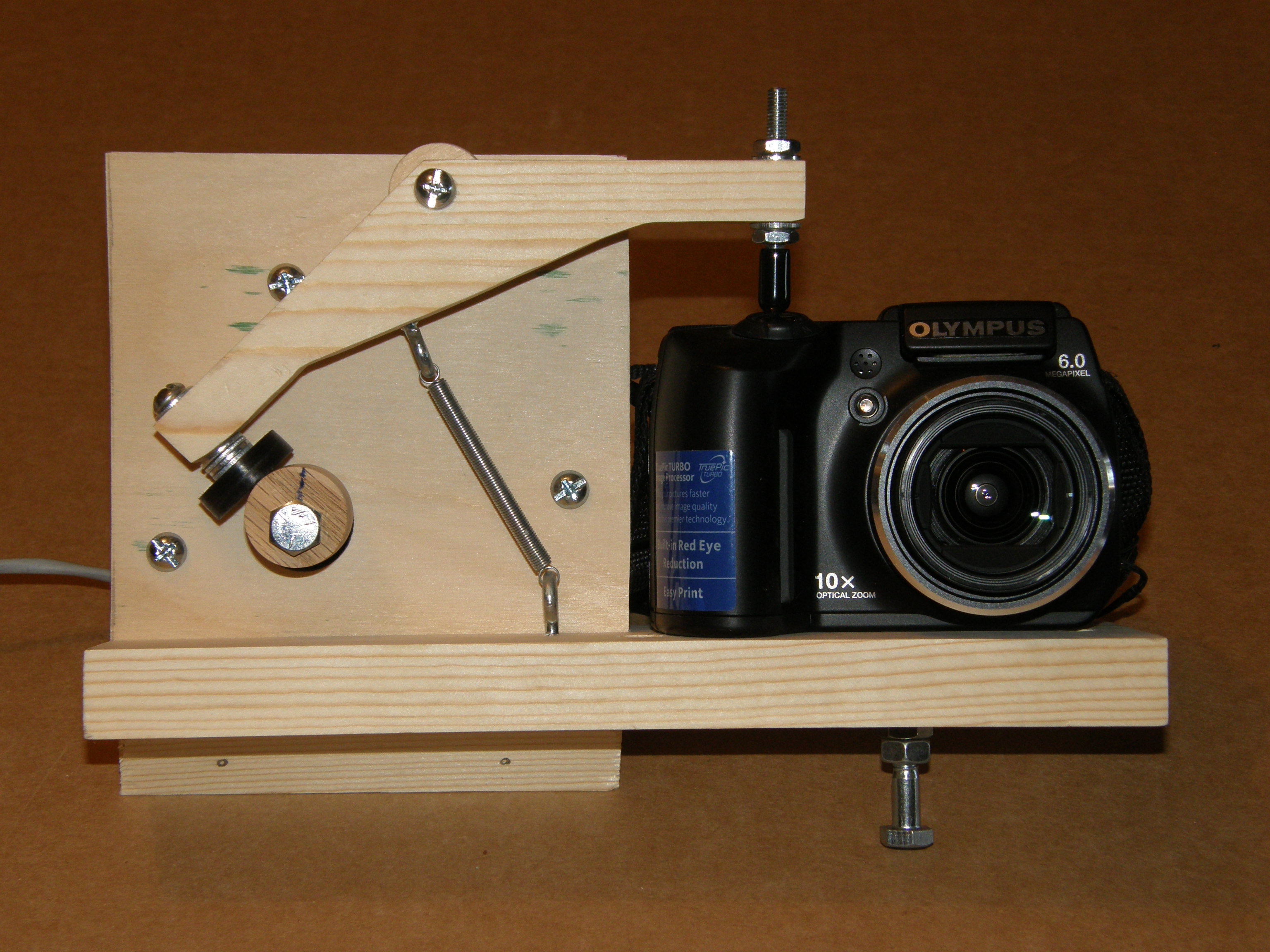
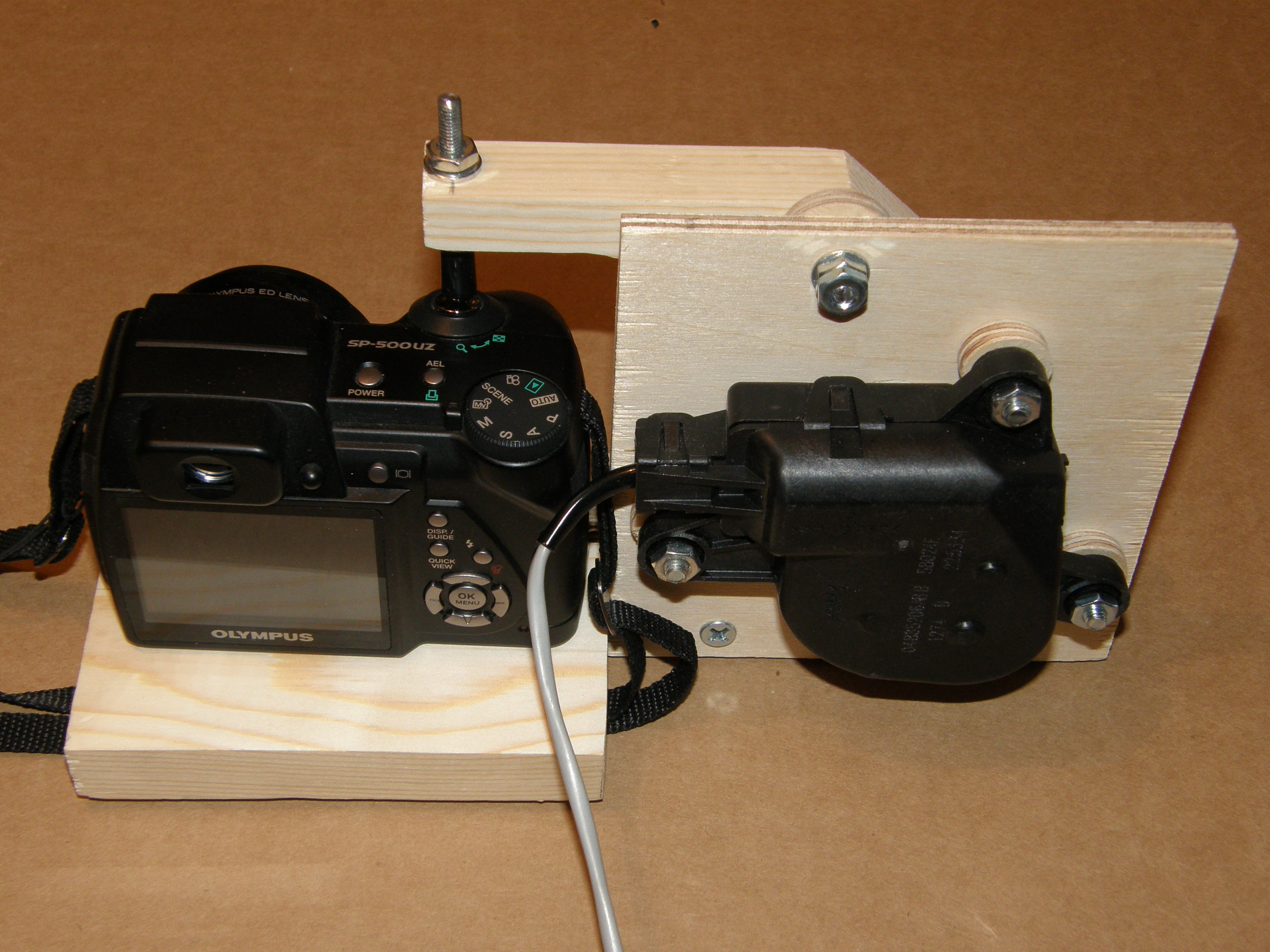
This instructable shows you how to take timelapse photos with almost any camera. The best part is you do not have to tear your camera apart and it is low cost.
This is really a motorized finger that pushes the button of your camera for you. The time between shots is determined by the speed of the motor. By hooking up different battery combinations you can change the voltage to the motor and change the speed of the motor. You can create some great looking timelapse movies just like the pros at a very low cost.
This is really a motorized finger that pushes the button of your camera for you. The time between shots is determined by the speed of the motor. By hooking up different battery combinations you can change the voltage to the motor and change the speed of the motor. You can create some great looking timelapse movies just like the pros at a very low cost.
Materials and Tools
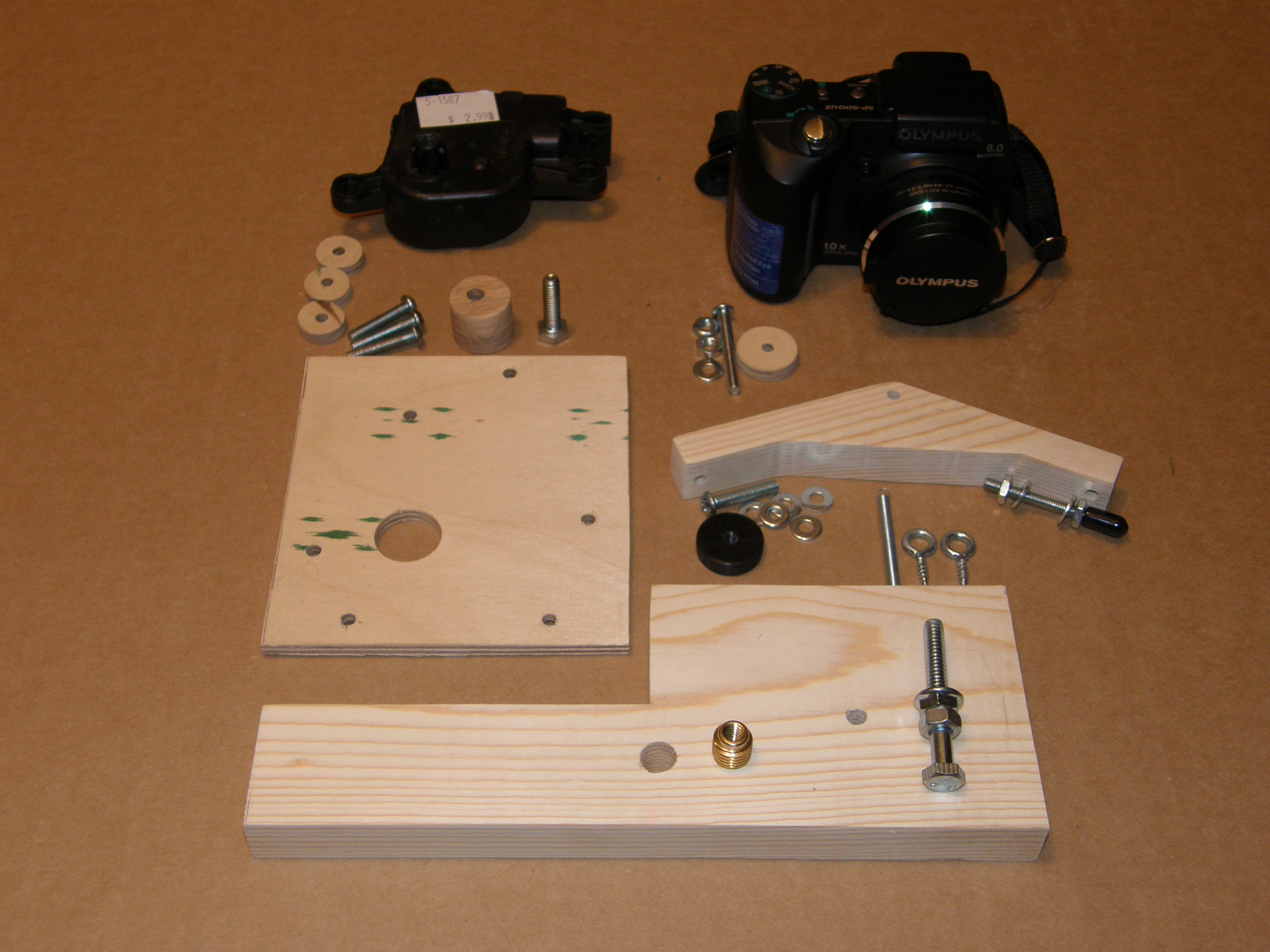
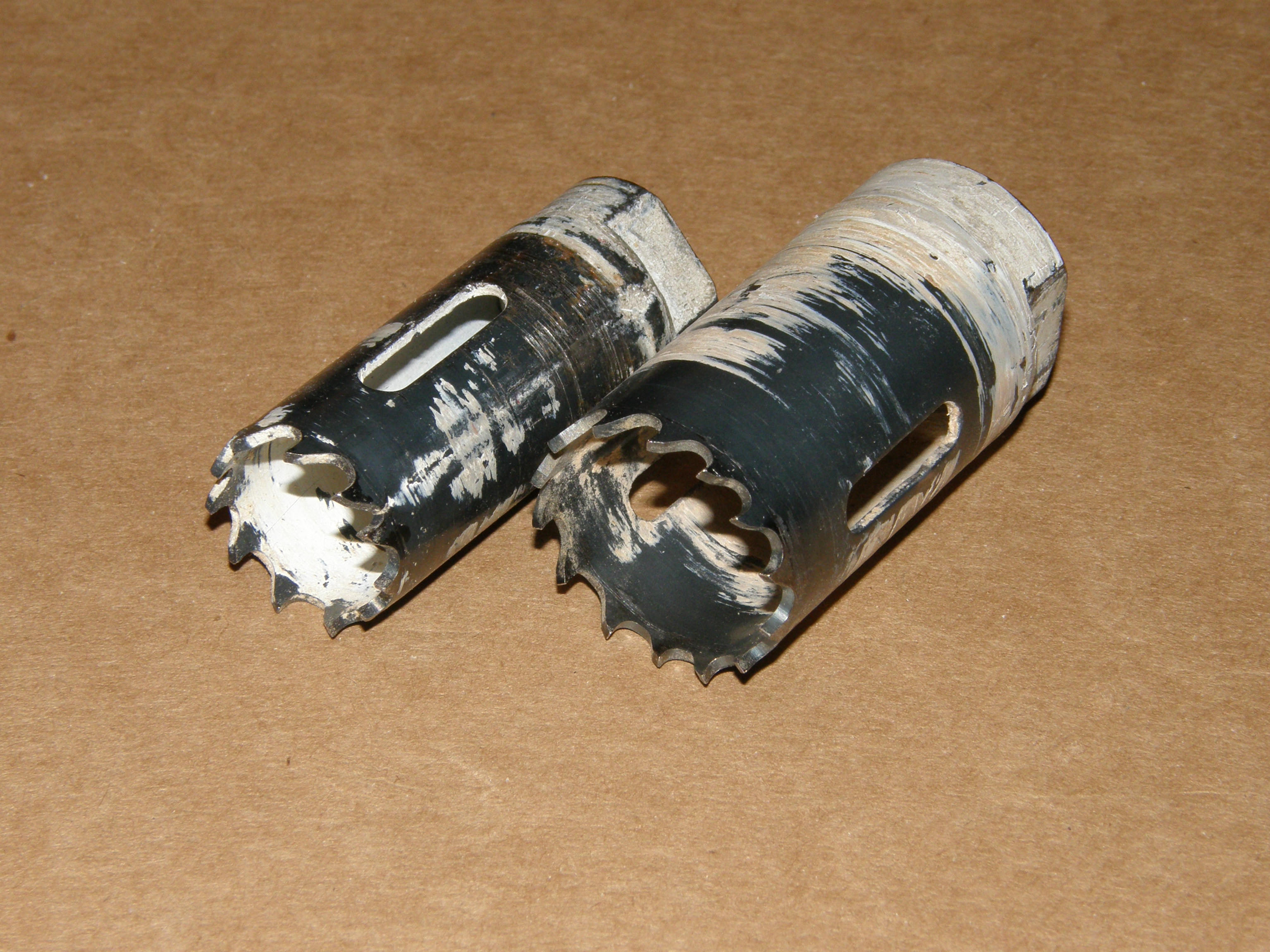
Material List
1 X 4 wood scrap 18 inches long
1/4 inch plywood or equal 4.5 X 5 inches
Scrap 1/4 inch plywood to make spacers
Scrap 3/4 thick oak to make offset cam
(1) 1/4 bolt X 2 inches long camera mount
(1) 1/4 bolt X 1 inches long rotating cam mount
(2) 1/4 hex nuts
(3) 10-32 machine screw 1 inch long
(1) 10-32 machine screw 1.5 inches long
(1) 10-32 threaded rod or cut head off of a 2 inch screw
(8) 10-32 hex nuts
(8) flat washers for fit 10-32 screws
(1) 1/4-20 threaded brass insert to allow mounting to tripod
(2) # 8 wood screws about 1 inch long
(1) Light spring
(2) Small eye screws for spring mounting
(1) www.surpluscenter.com 4 RPM 12 VDC gearmotor or other very slow speed motor.
Item number 5-1587
Scrap of plastic to make round disk that rubs against cam wheel
Wire to connect to a battery
Battery holder or plug to connect to auto 12v outlet
Solder to make connection to motor
This is most of what you need for the cameras I used. Adjustments will be needed for
larger or smaller cameras. I have two cameras that will work but the finger that
pushes the camera button will have to be adjusted.
Tools Needed
Drill
Jig saw
Miter saw is nice but all of this can be cut with the correct hand saws
Hacksaw
Hole saws 1-1/8 and 7/8 inch
clamps
screwdrivers
Drill press makes it easier to cut spacers but it can be done with a hand drill
(Center pilot drill is removed to cut little wheels out)
You can also use a stack of washers for spacers.
Drill bits
10-32 Tap and #21 bit
1/4-20 Tap
soldering iron
1 X 4 wood scrap 18 inches long
1/4 inch plywood or equal 4.5 X 5 inches
Scrap 1/4 inch plywood to make spacers
Scrap 3/4 thick oak to make offset cam
(1) 1/4 bolt X 2 inches long camera mount
(1) 1/4 bolt X 1 inches long rotating cam mount
(2) 1/4 hex nuts
(3) 10-32 machine screw 1 inch long
(1) 10-32 machine screw 1.5 inches long
(1) 10-32 threaded rod or cut head off of a 2 inch screw
(8) 10-32 hex nuts
(8) flat washers for fit 10-32 screws
(1) 1/4-20 threaded brass insert to allow mounting to tripod
(2) # 8 wood screws about 1 inch long
(1) Light spring
(2) Small eye screws for spring mounting
(1) www.surpluscenter.com 4 RPM 12 VDC gearmotor or other very slow speed motor.
Item number 5-1587
Scrap of plastic to make round disk that rubs against cam wheel
Wire to connect to a battery
Battery holder or plug to connect to auto 12v outlet
Solder to make connection to motor
This is most of what you need for the cameras I used. Adjustments will be needed for
larger or smaller cameras. I have two cameras that will work but the finger that
pushes the camera button will have to be adjusted.
Tools Needed
Drill
Jig saw
Miter saw is nice but all of this can be cut with the correct hand saws
Hacksaw
Hole saws 1-1/8 and 7/8 inch
clamps
screwdrivers
Drill press makes it easier to cut spacers but it can be done with a hand drill
(Center pilot drill is removed to cut little wheels out)
You can also use a stack of washers for spacers.
Drill bits
10-32 Tap and #21 bit
1/4-20 Tap
soldering iron
PDF Templates
The PDF files are drawings of the different parts that are needed. The PDF files
are full size drawings that should be printed out and used as a template to make
your parts.
Use the templates to cut out the parts keeping in mind that you may have to make some parts larger or smaller if your camera is different. The two Olympus cameras that work on mine measure 2.65 (D-550 zoom) and 2.8 (SP-500UZ) inches from the bottom of the camera to the top of the trigger button.
Also included is a PDF that relates motor rpm to the number of seconds between pictures.
are full size drawings that should be printed out and used as a template to make
your parts.
Use the templates to cut out the parts keeping in mind that you may have to make some parts larger or smaller if your camera is different. The two Olympus cameras that work on mine measure 2.65 (D-550 zoom) and 2.8 (SP-500UZ) inches from the bottom of the camera to the top of the trigger button.
Also included is a PDF that relates motor rpm to the number of seconds between pictures.
Soldering Wires to the Motor Terminals
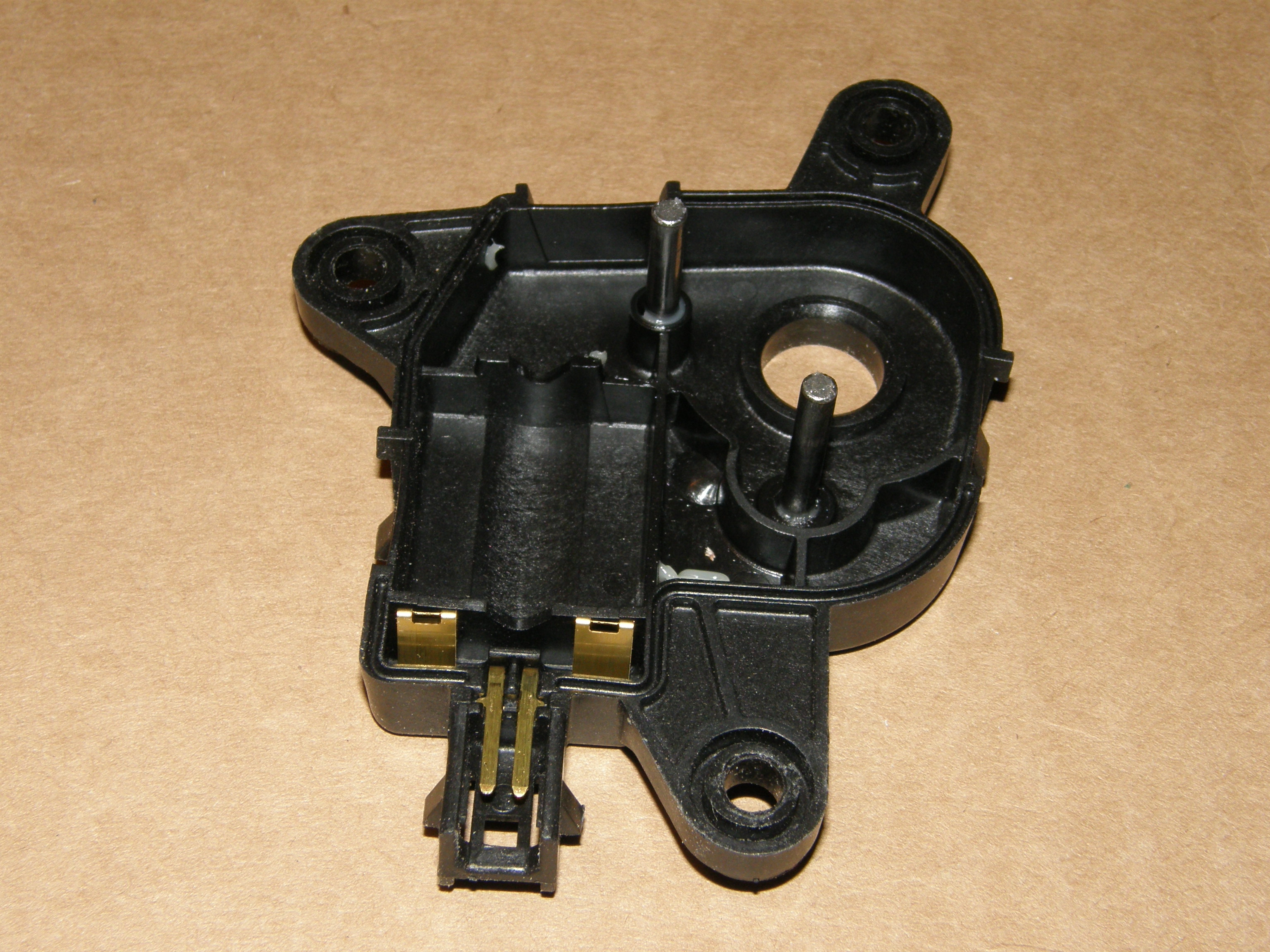
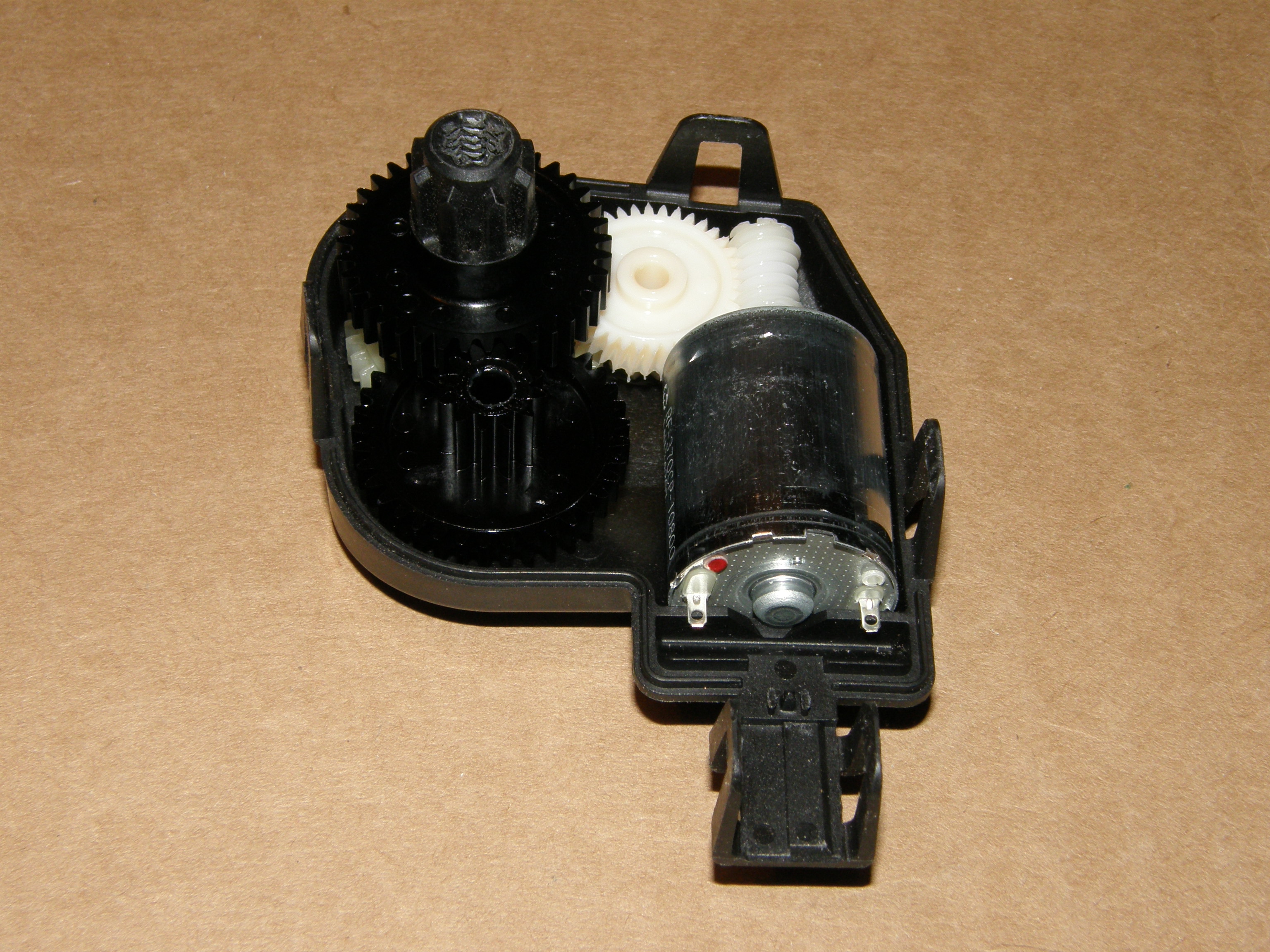
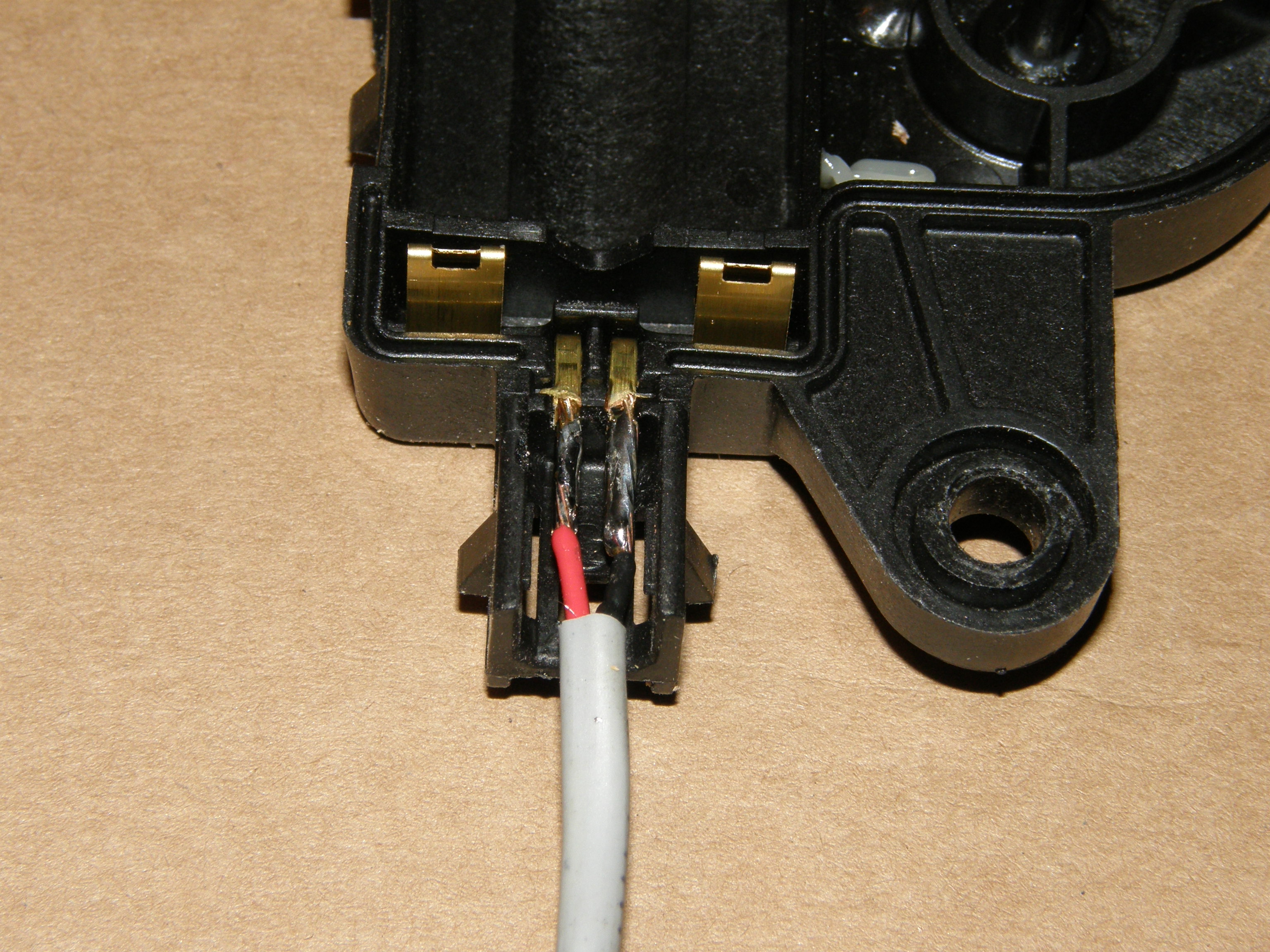
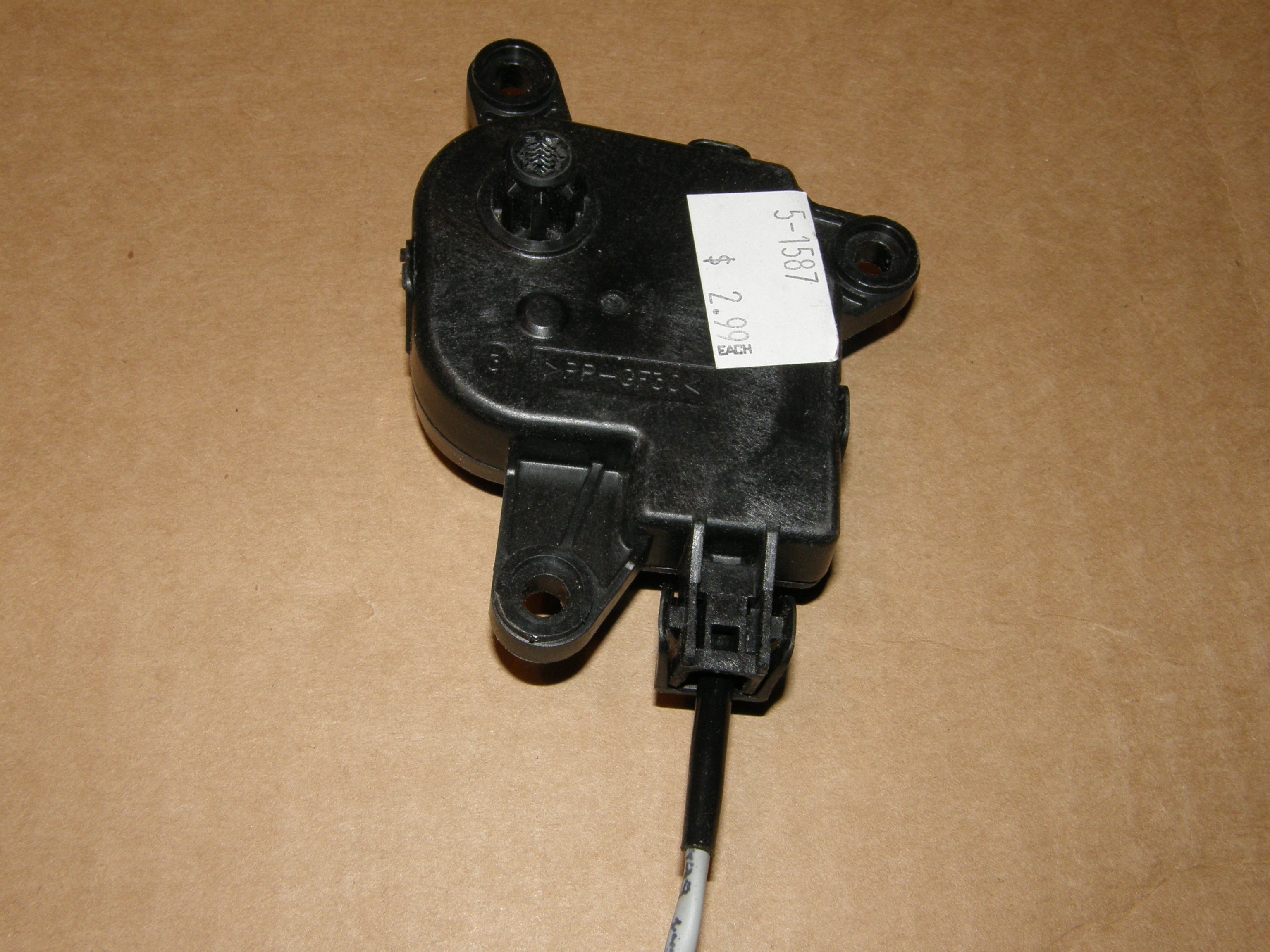
The motor has terminals that extension wires need to be soldered to. This will allow you to connect to different types of power sources.
The motor is opened by prying on the small latches on the outer edges of the case.
I used a 2 wire cable and used heat shrink between the terminals and around the wire to prevent any short circuits.
Tap the Motor Shaft
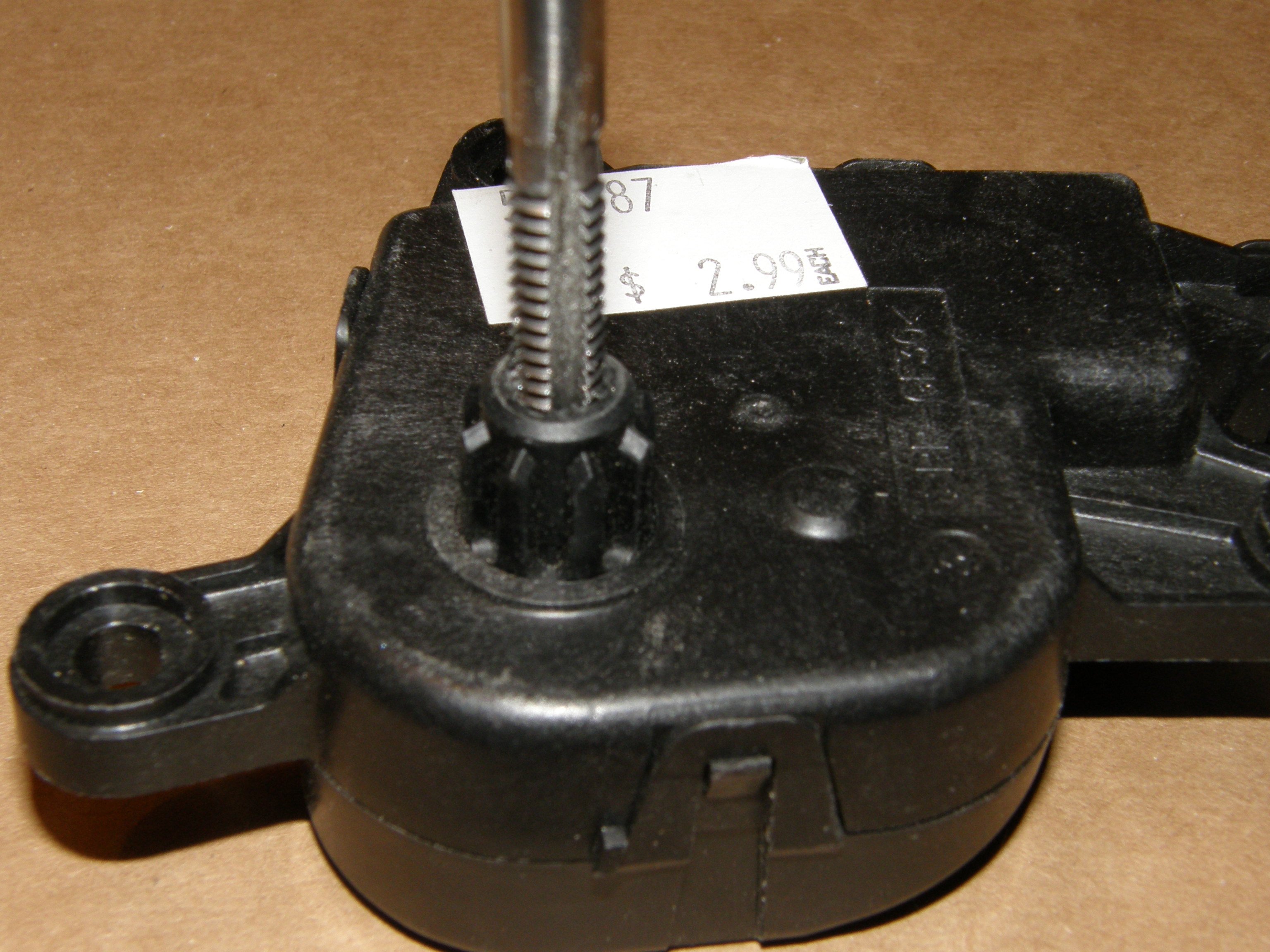
The motor shaft is plastic and needs to be tapped with a 1/4-20 tap to allow the offset cam wheel to be mounted to it with a 1 inch long 1/4 inch bolt.
The hole does not need to be drilled out. I used a cordless drill to tap the threads in the existing hole. Install the tap in your drill and slowly run the tap as straight as possible into the center of the plastic shaft.
The hole does not need to be drilled out. I used a cordless drill to tap the threads in the existing hole. Install the tap in your drill and slowly run the tap as straight as possible into the center of the plastic shaft.
Making the Offset Cam Wheel
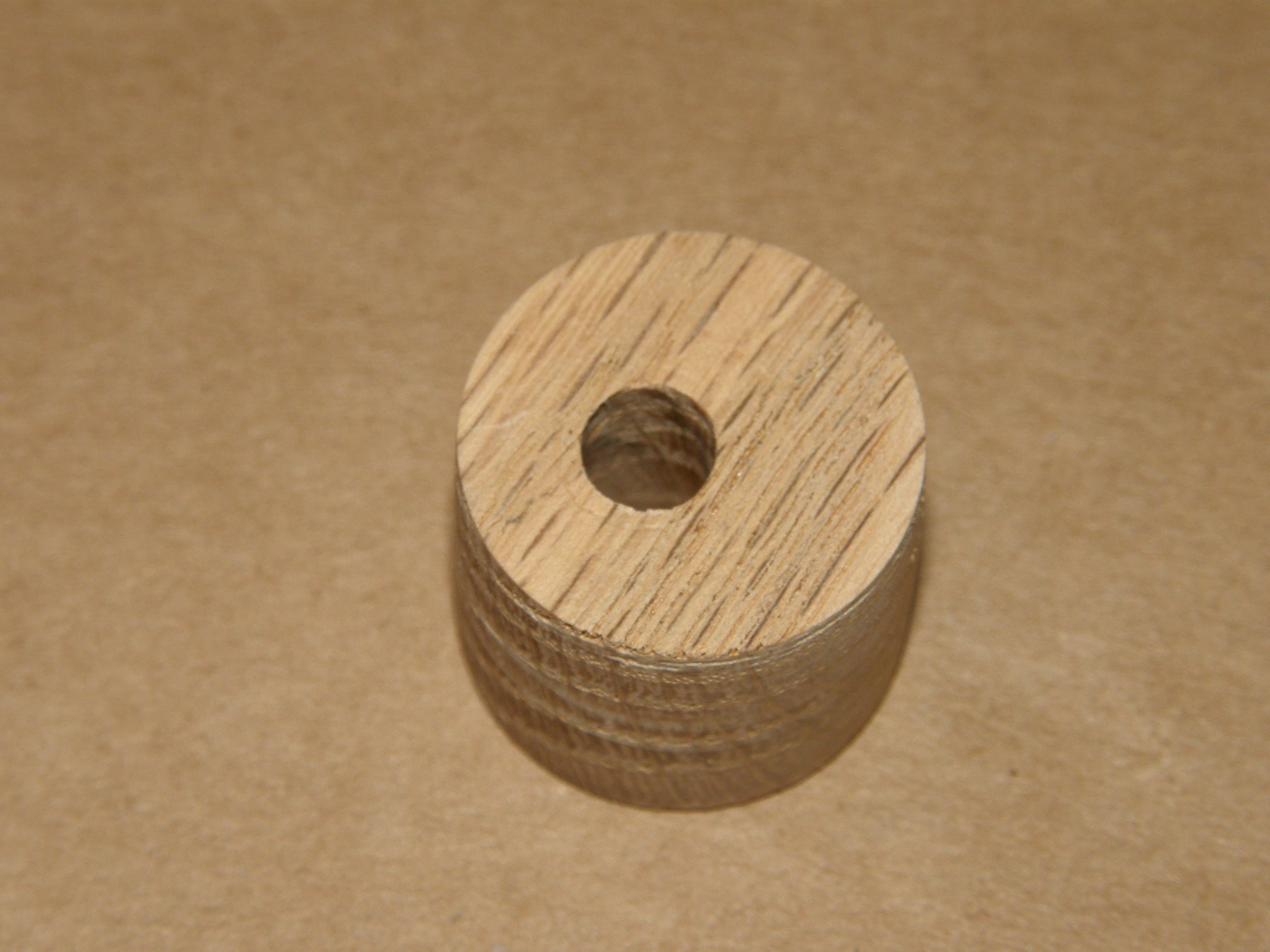
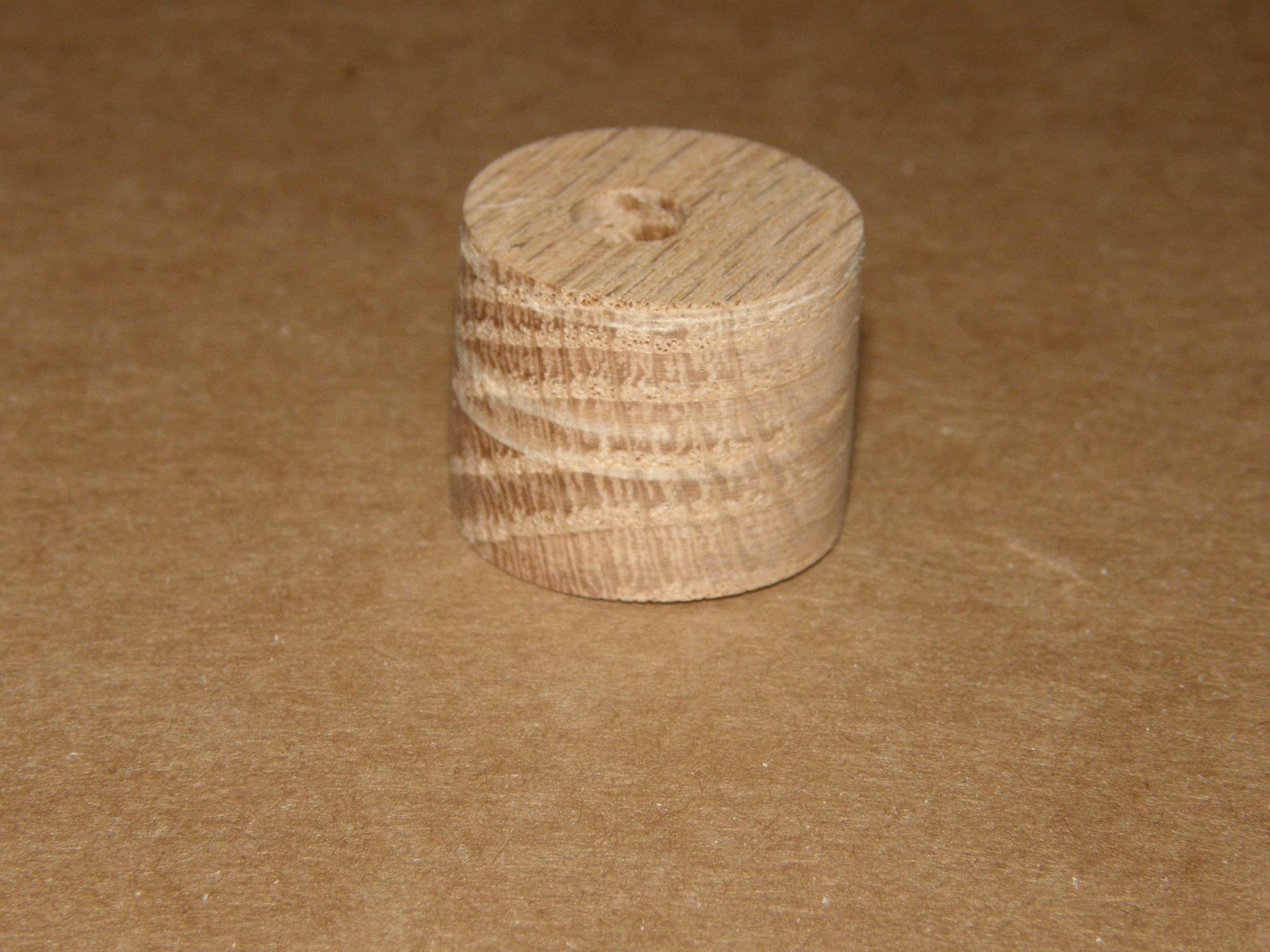
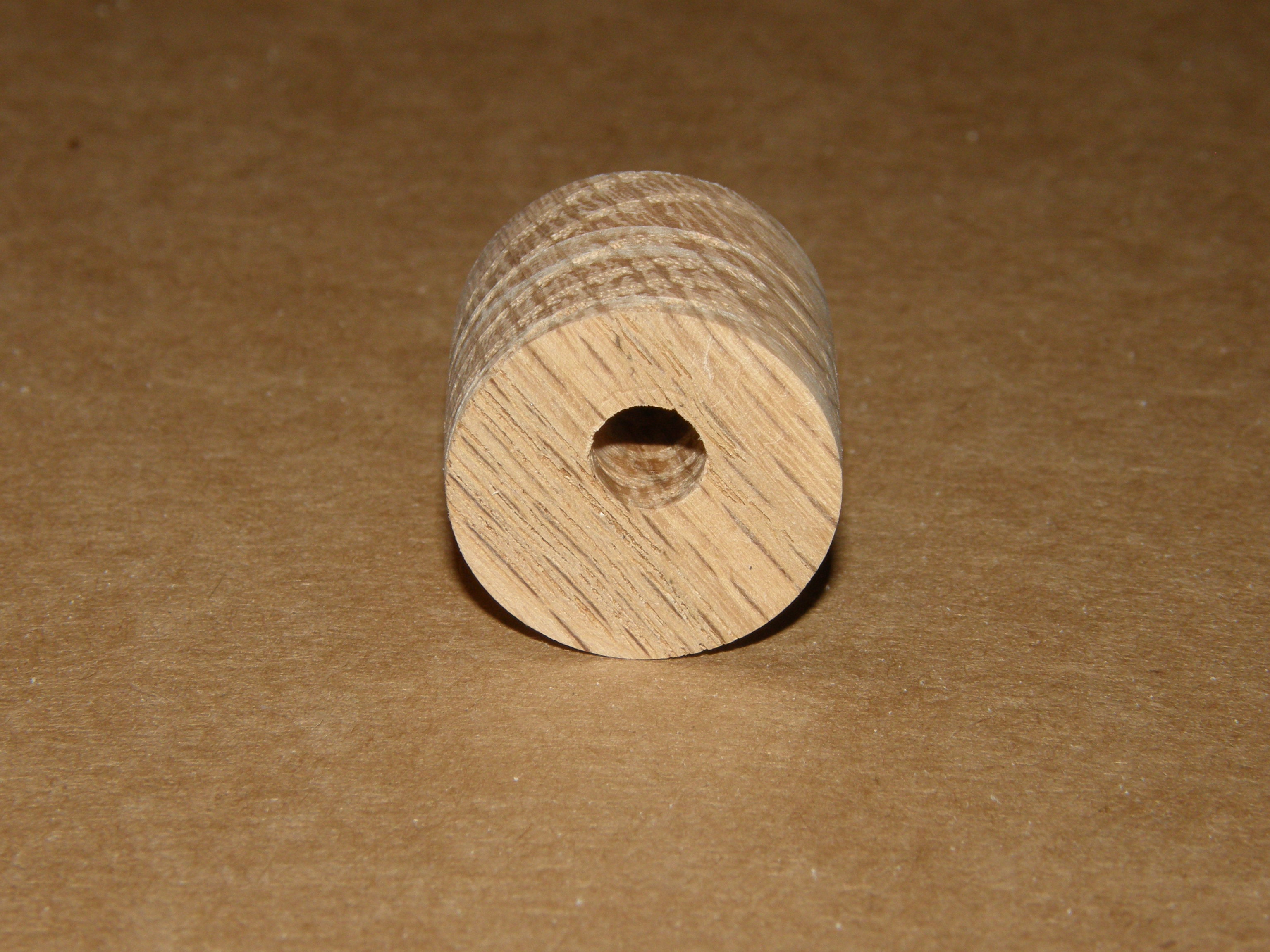
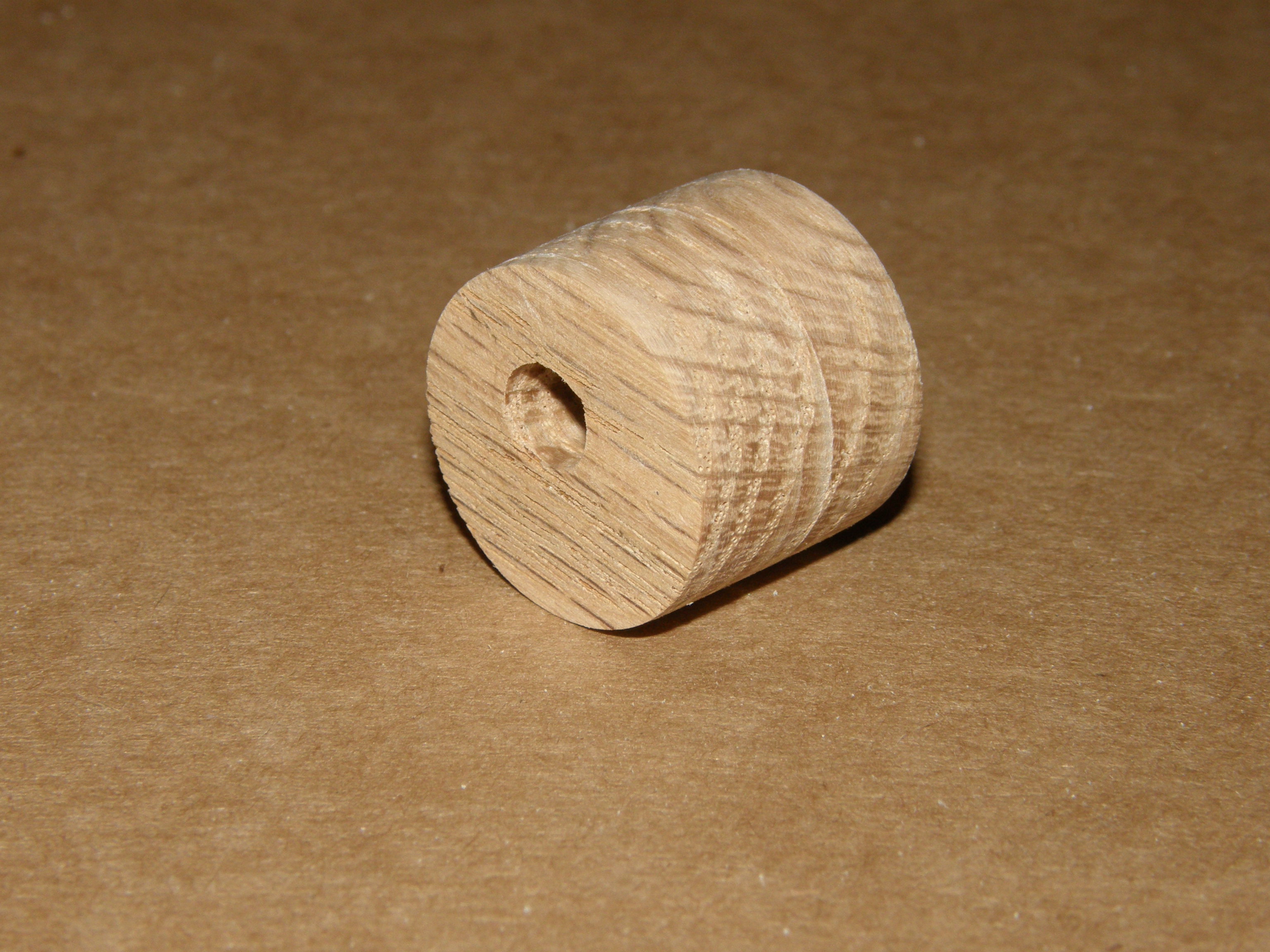
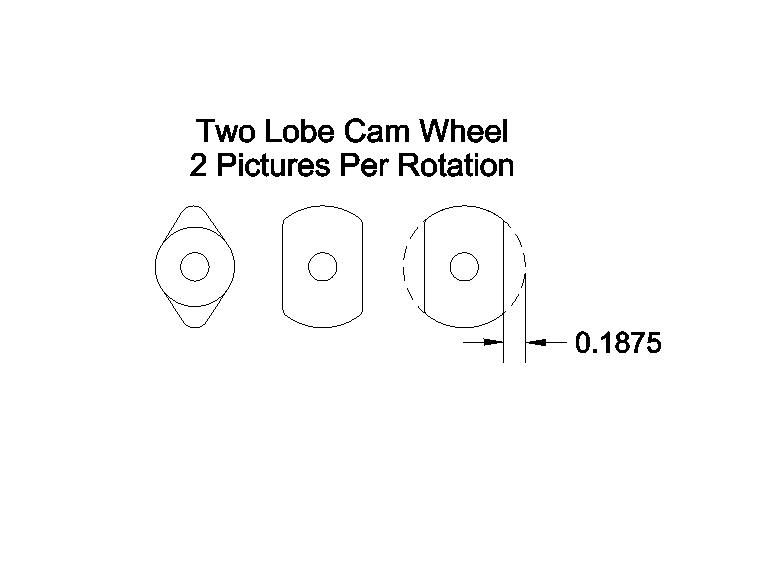
I made the offset cam wheel out of oak because I wanted a material that was fairly hard. It needs to be cut with the 1-1/8 inch hole saw without the pilot bit. This can done in a drill press or you have to holesaw a hole through a scrap piece of wood and then champ the scrap piece to the oak. Then place the holesaw without the pilot bit this time in the hole of the scrap to cut the oak clamped below it. The scrap wood holds the holesaw centered so that you are able to start the holesaw without a pilot bit.
The .25 inch center hole needs to be offset from center 3/32 of an inch. A drill press is helpful to get this drilled straight and with the correct offset. The outside is rough when cut by a holesaw so it needs to be sanded to make is smooth.
I added pictures for those who may want to take pictures faster by using a cam with two lobes. Also look at the PDF file on step 2 for more information.
The .25 inch center hole needs to be offset from center 3/32 of an inch. A drill press is helpful to get this drilled straight and with the correct offset. The outside is rough when cut by a holesaw so it needs to be sanded to make is smooth.
I added pictures for those who may want to take pictures faster by using a cam with two lobes. Also look at the PDF file on step 2 for more information.
Assembly of Parts
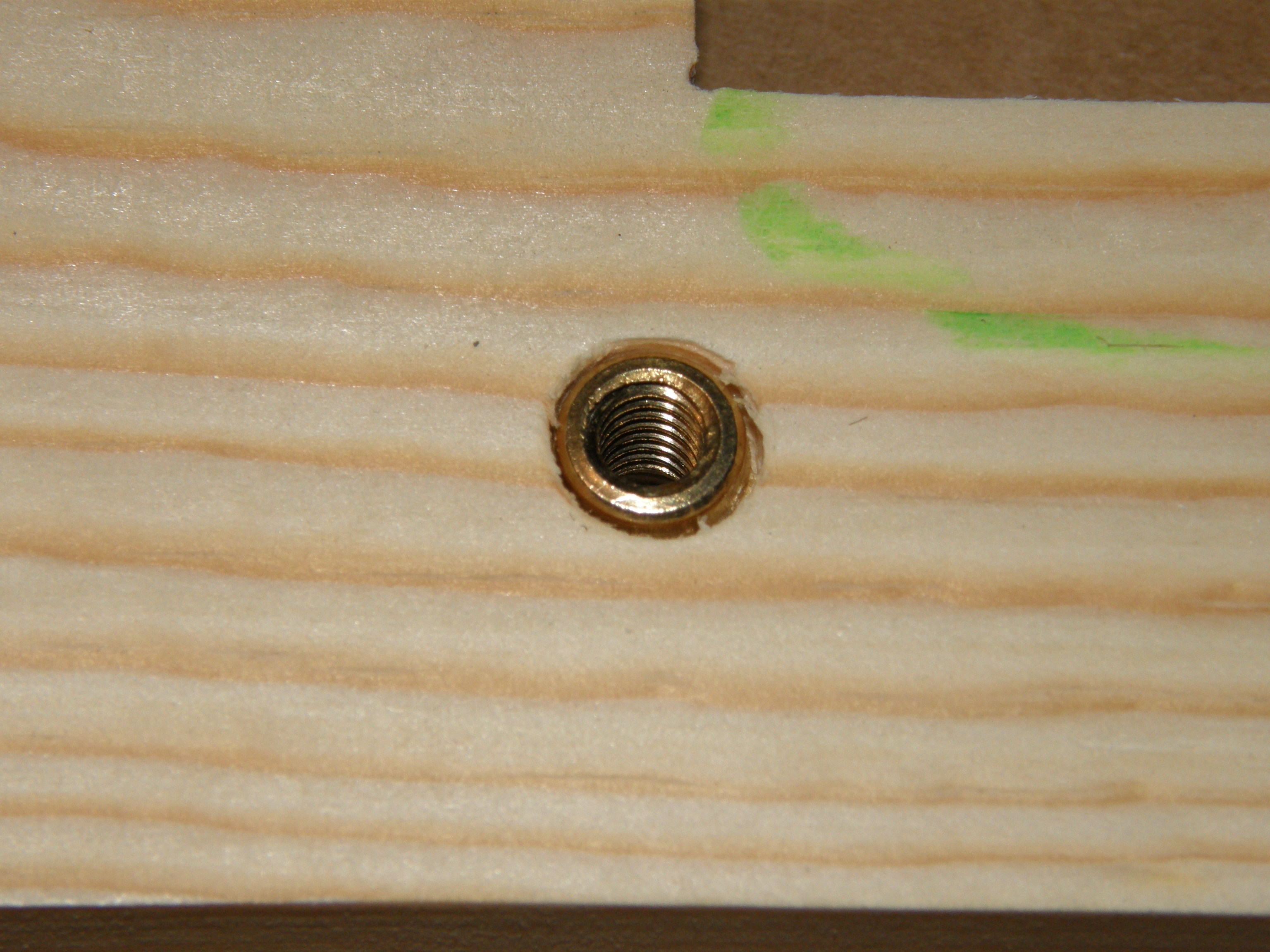
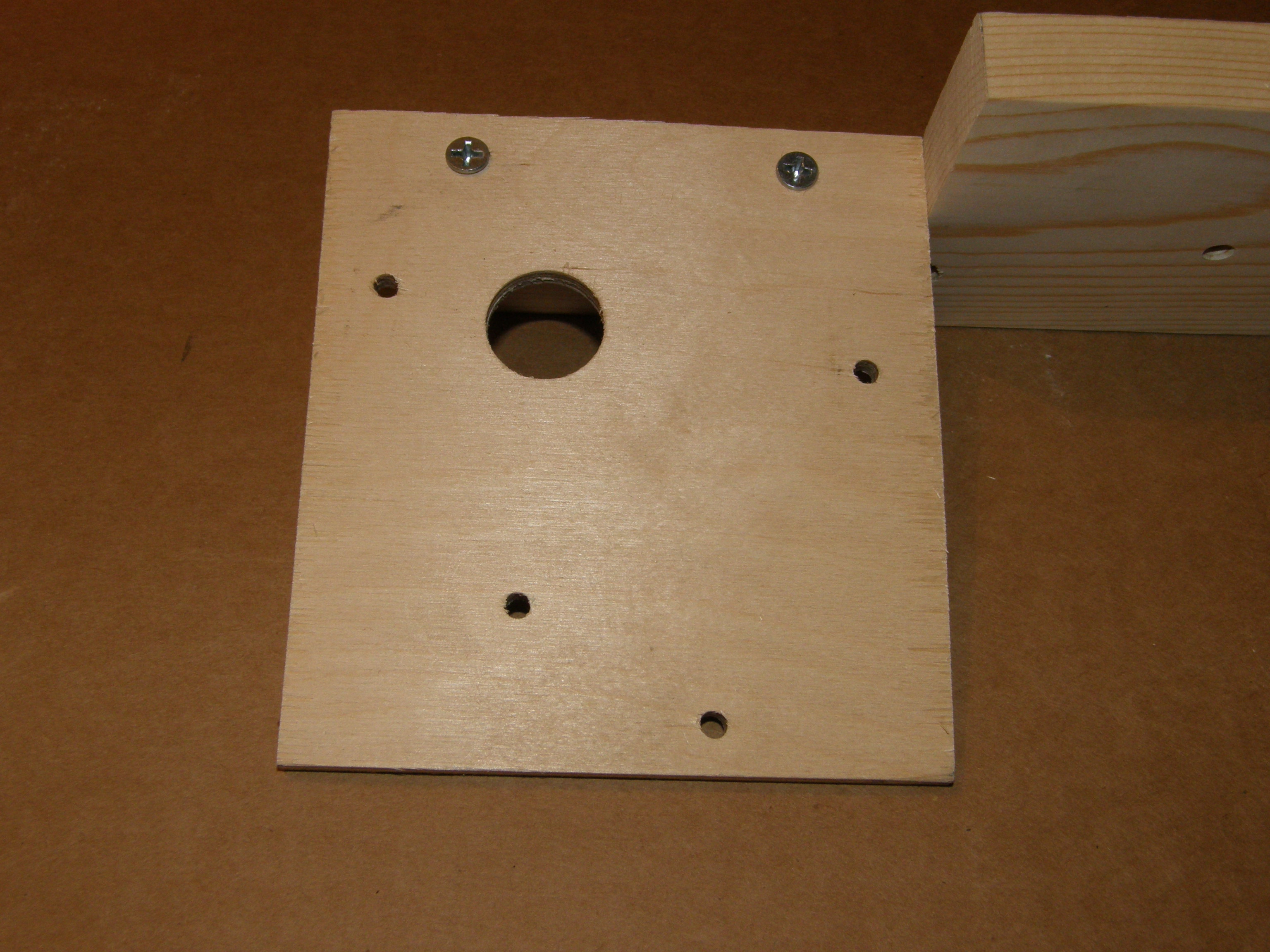

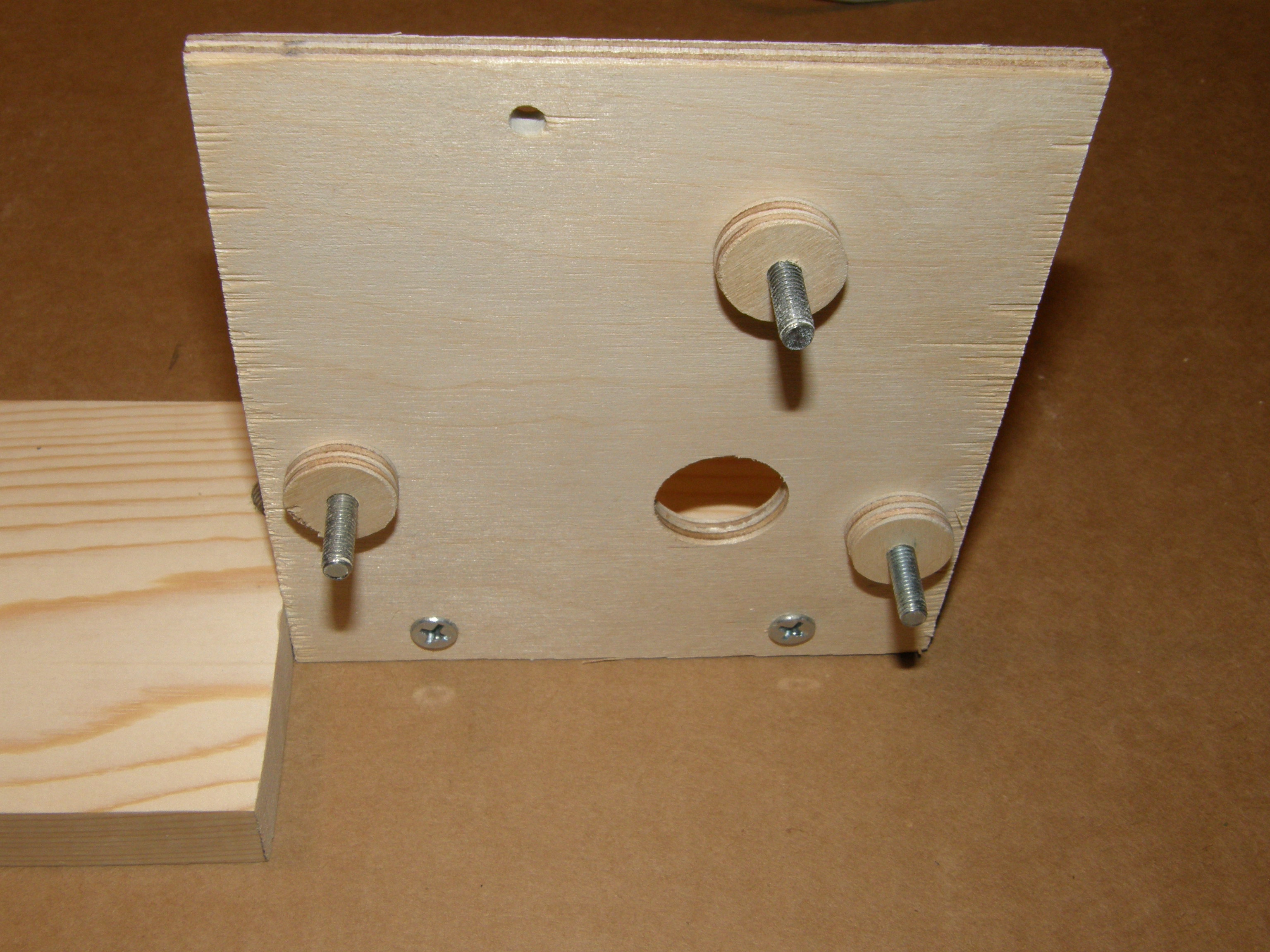
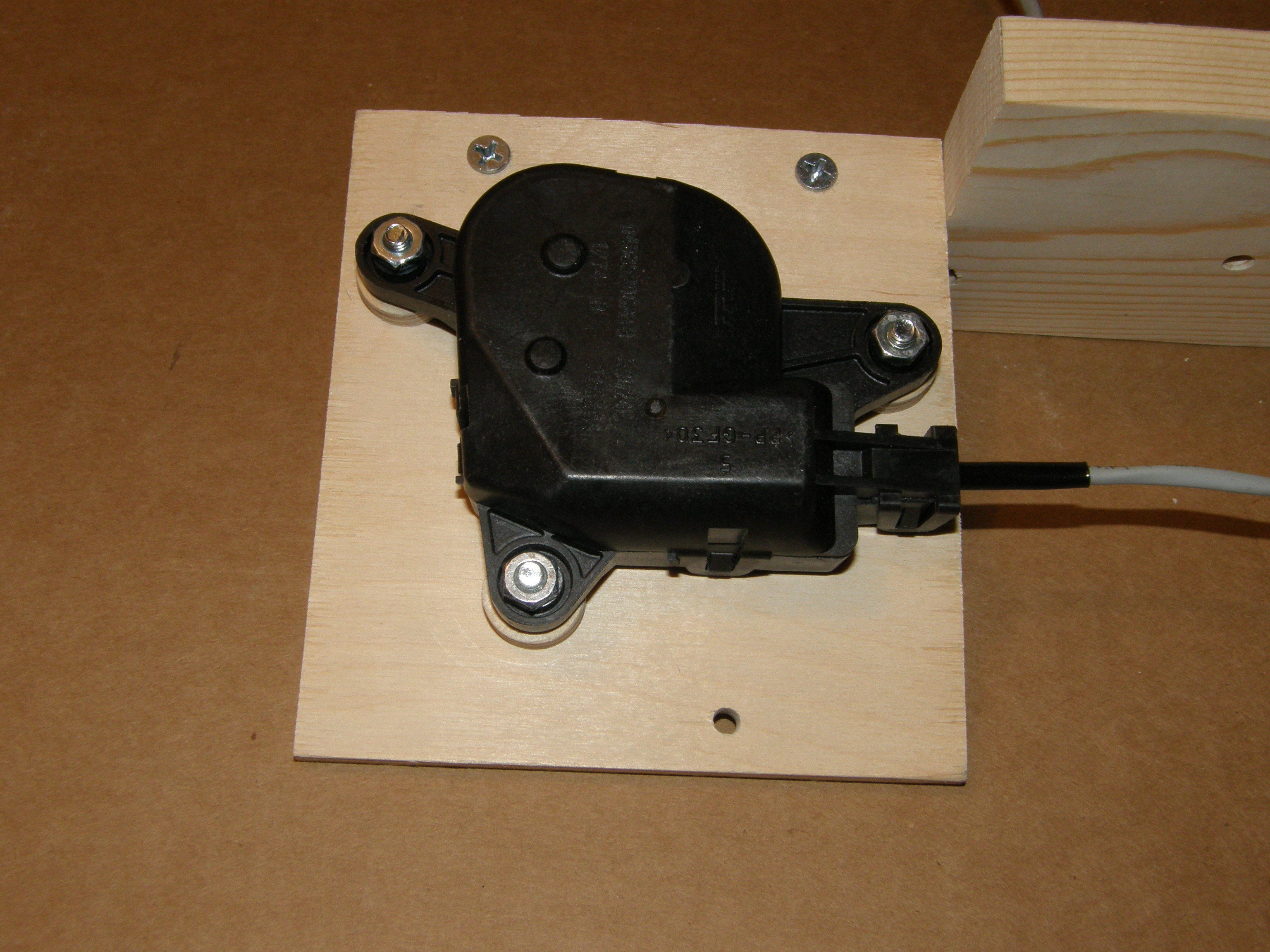
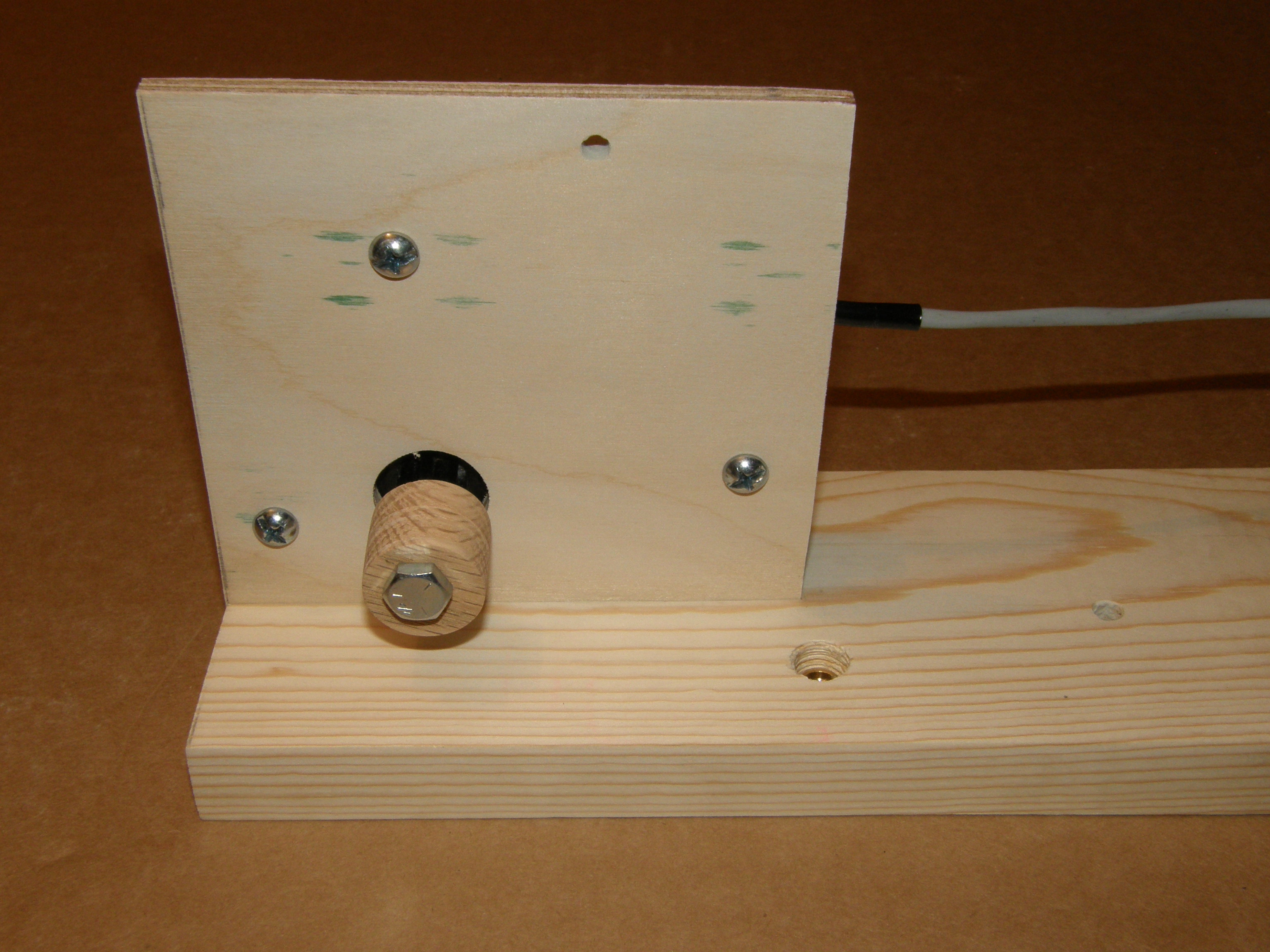
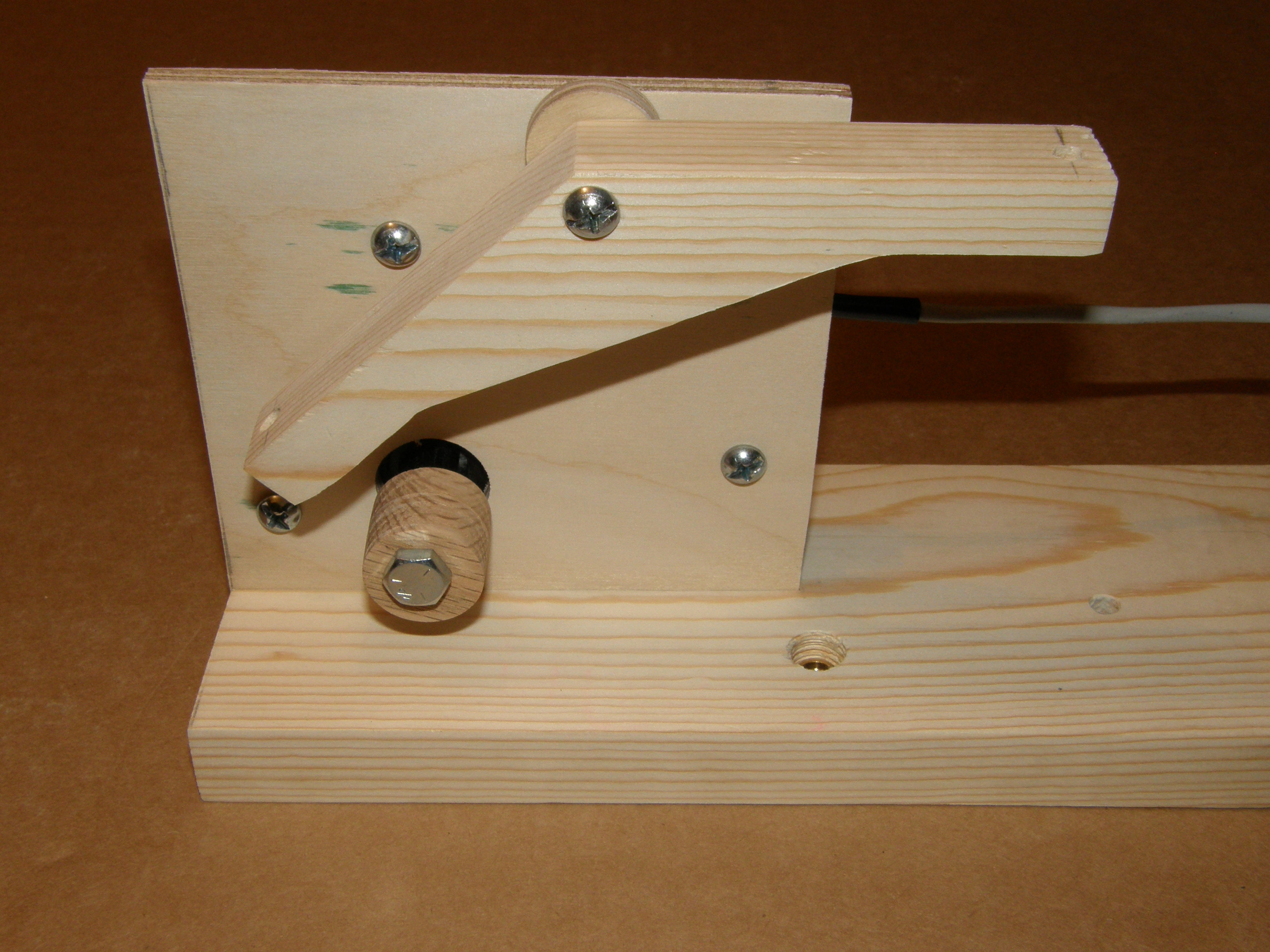
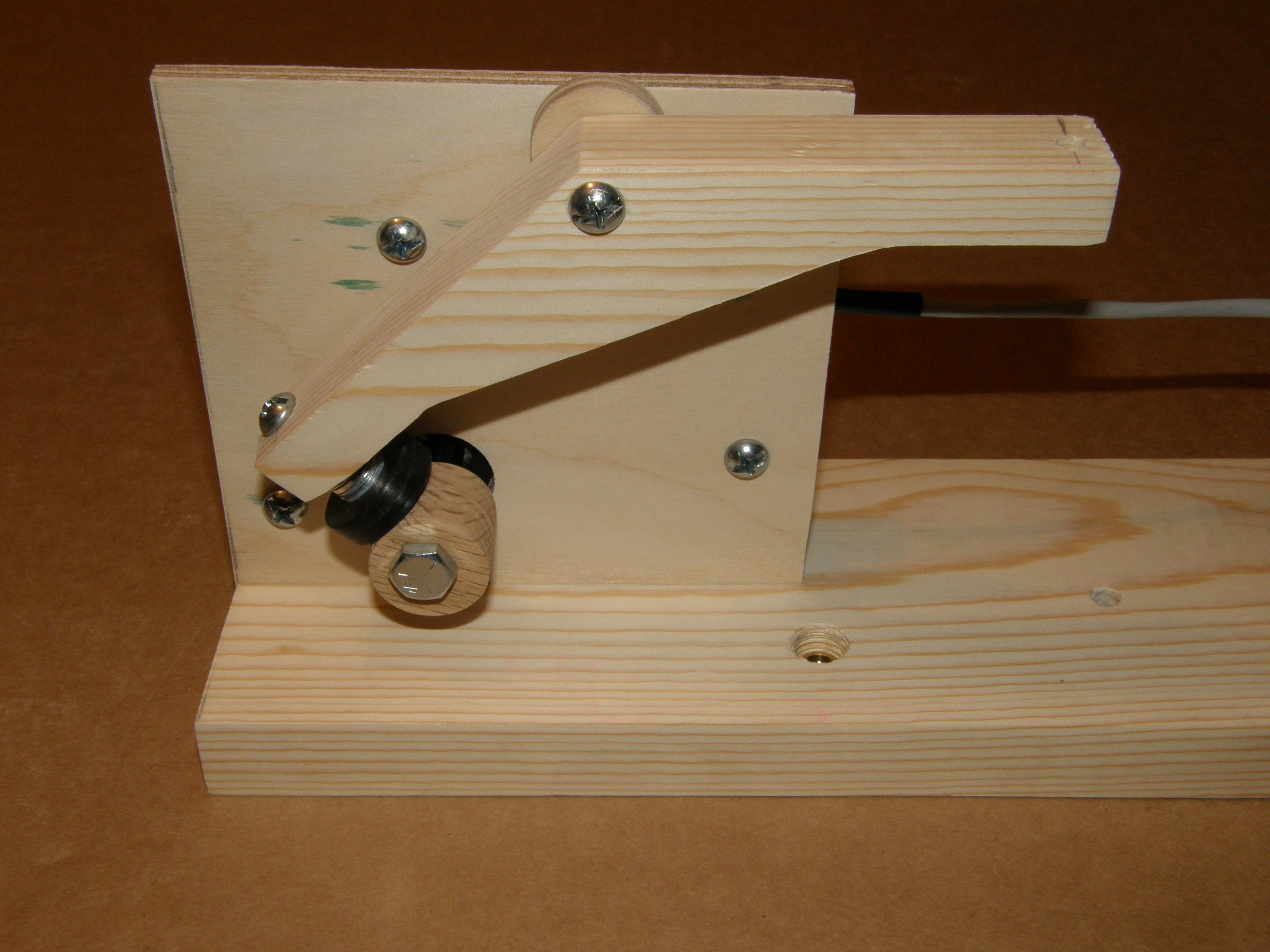
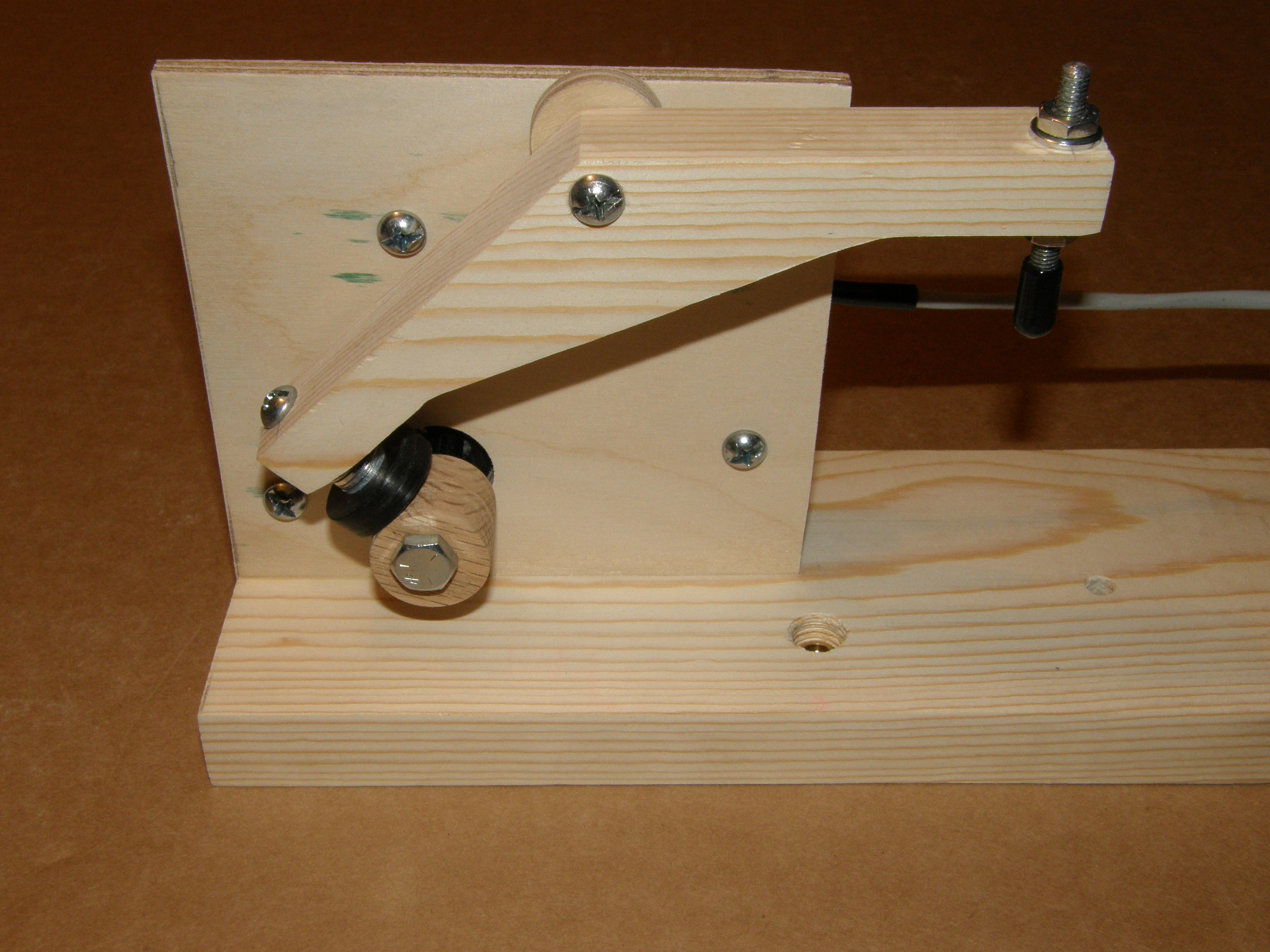

The following pictures show some of the assembly steps. Refer to the notes on the pictures.
Making Adjustments
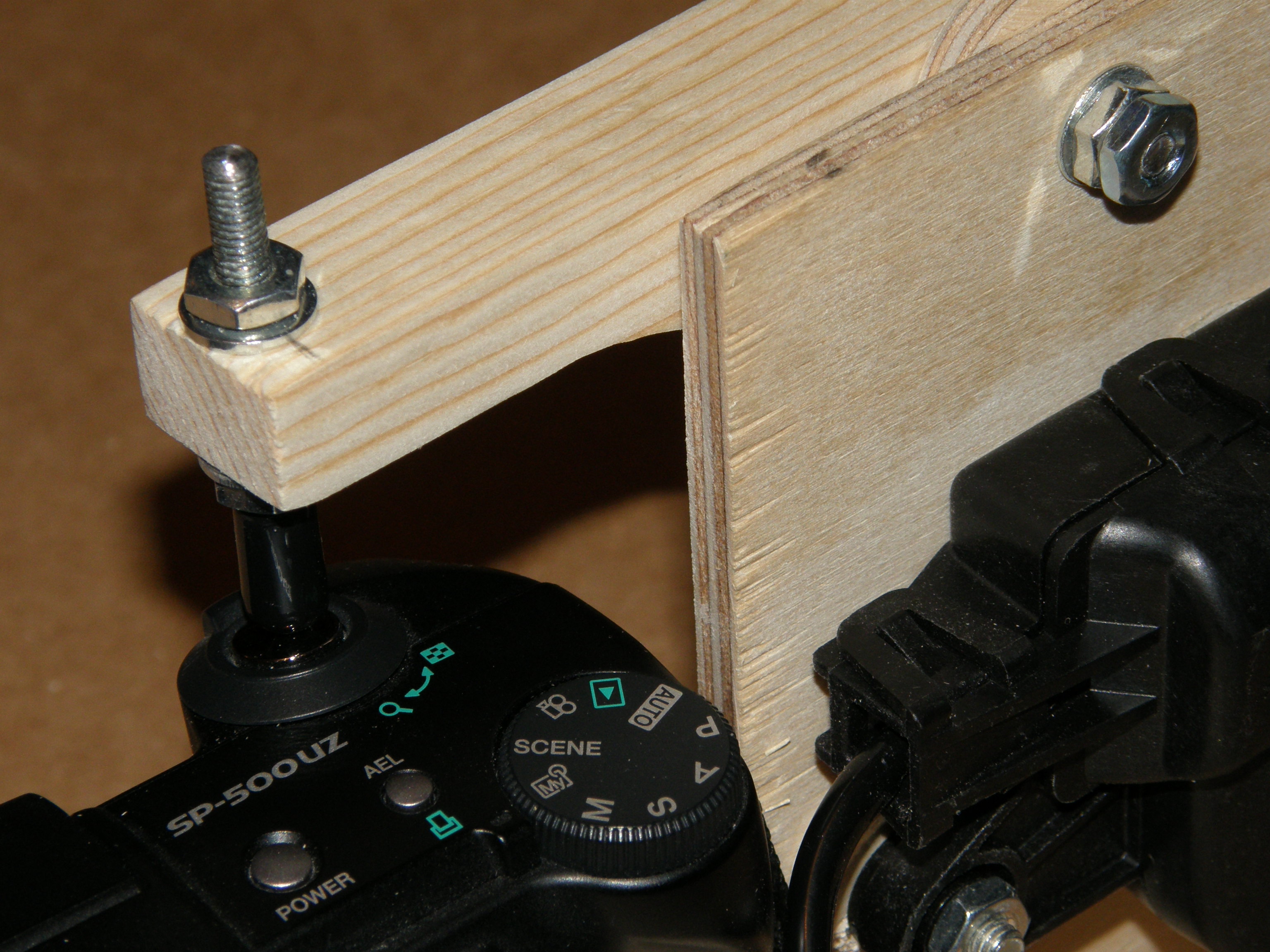
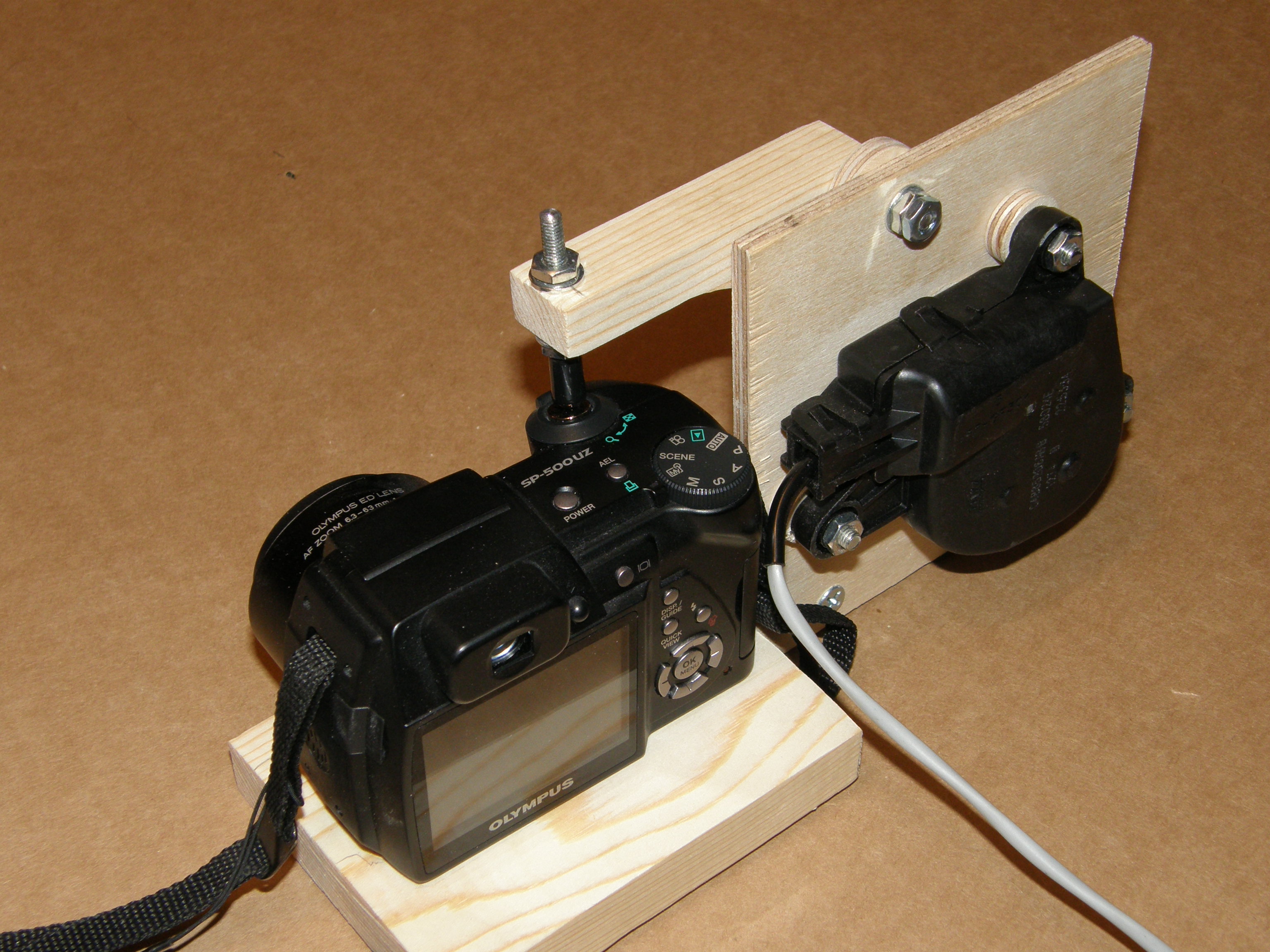
The threaded 10-32 finger rod needs to be setup loose first and the slowly adjusted so that the camera takes pictures. Do not damage your camera by forgetting this adjustment.
Power Options
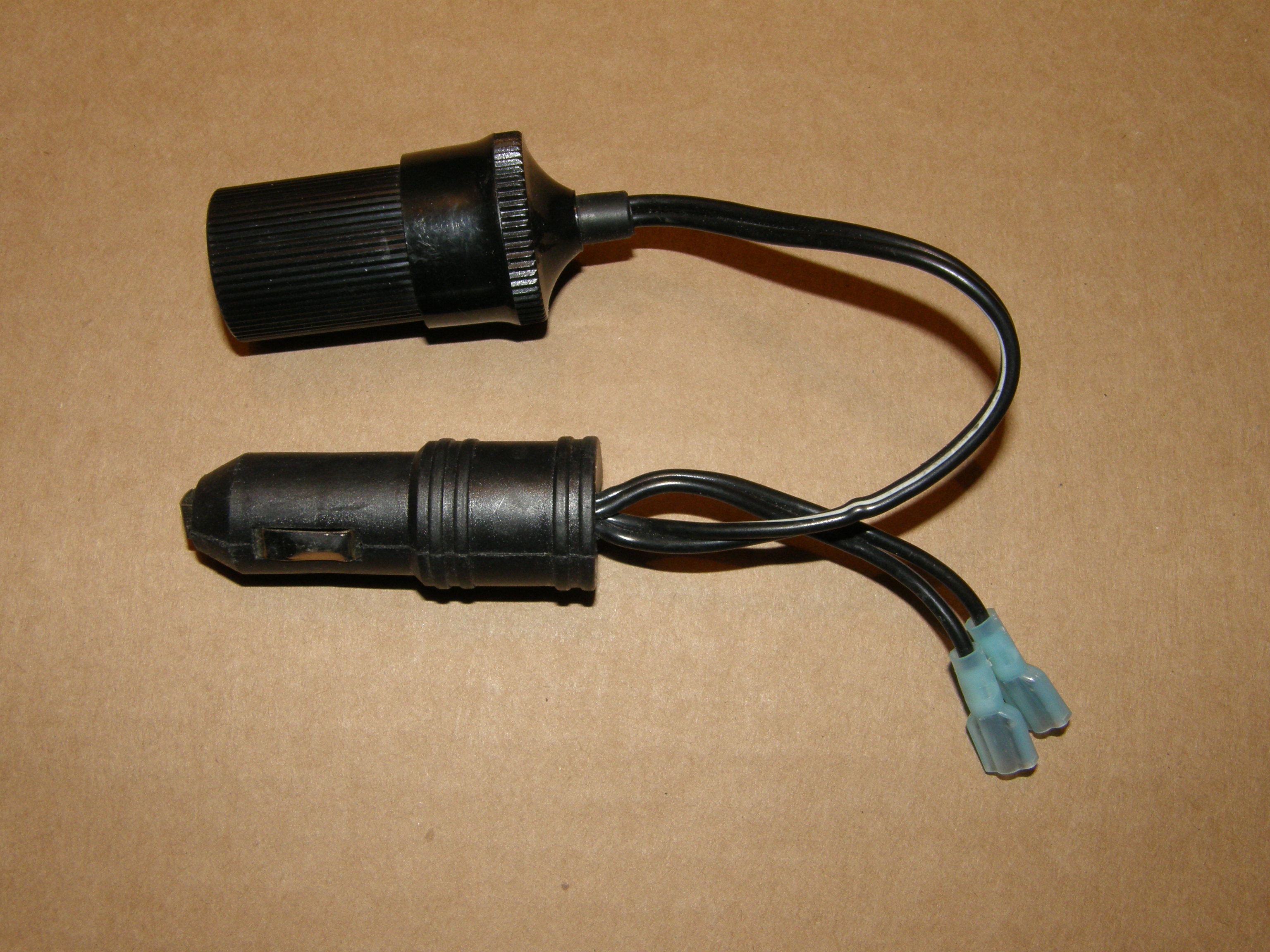
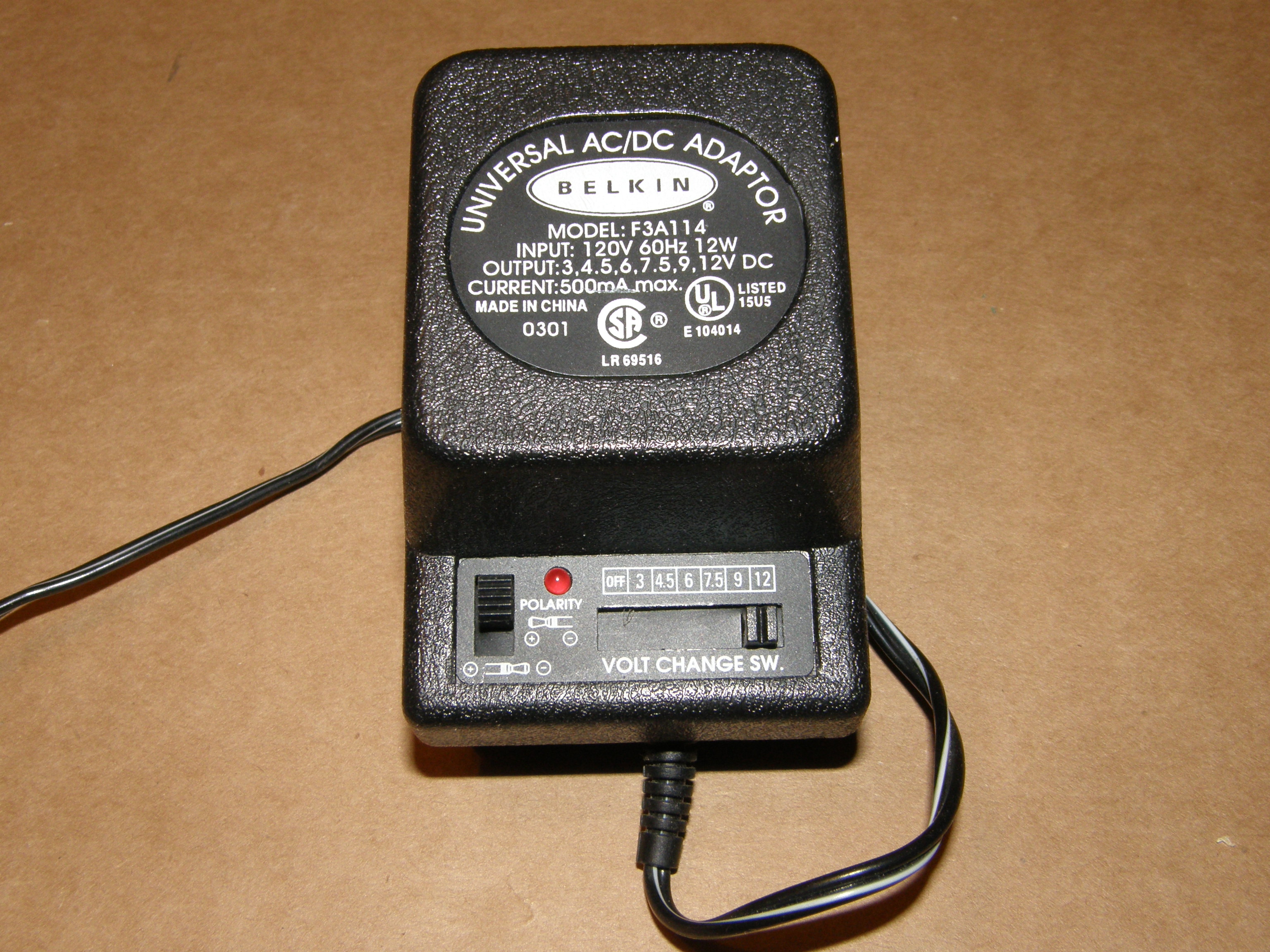
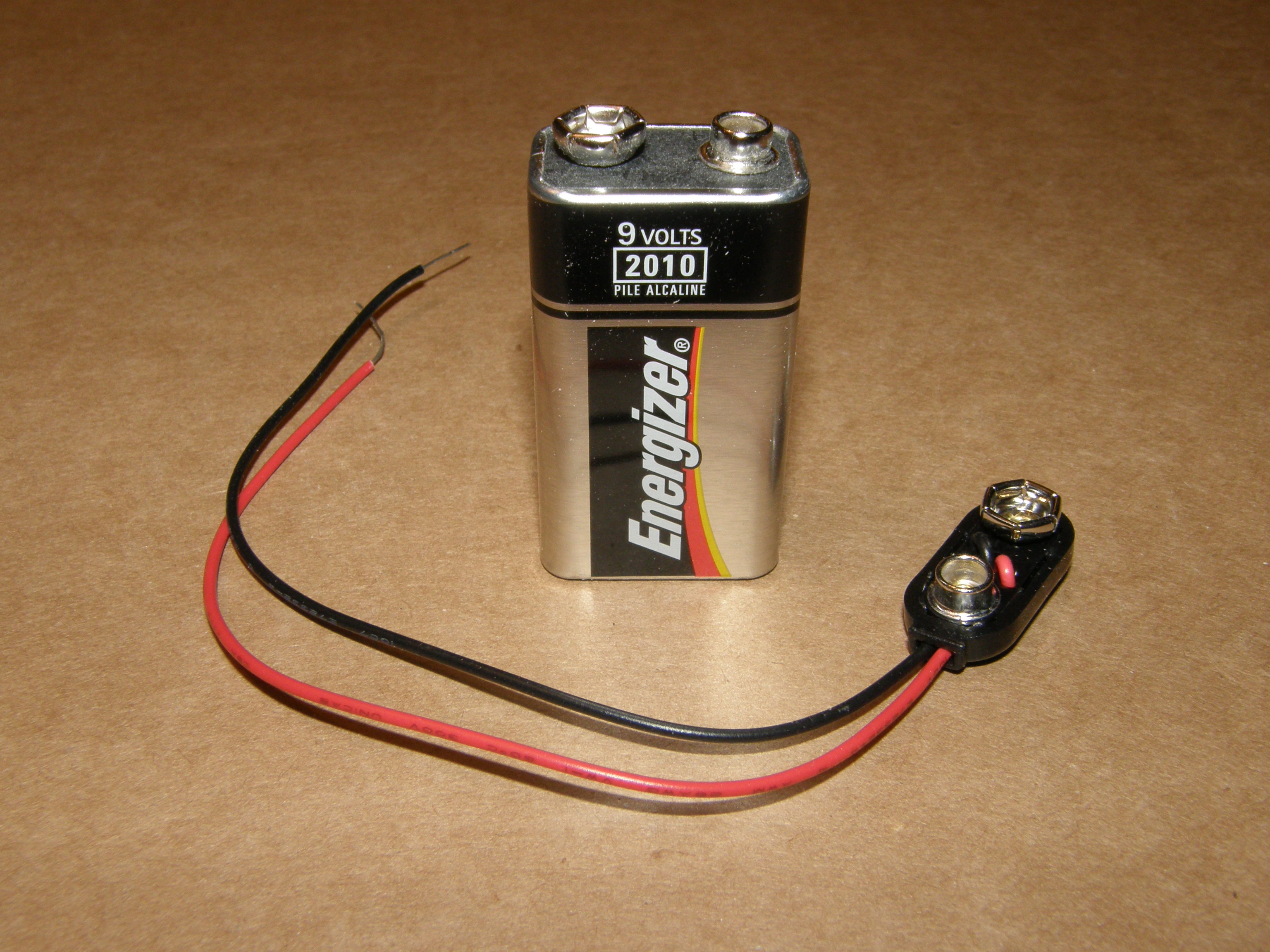
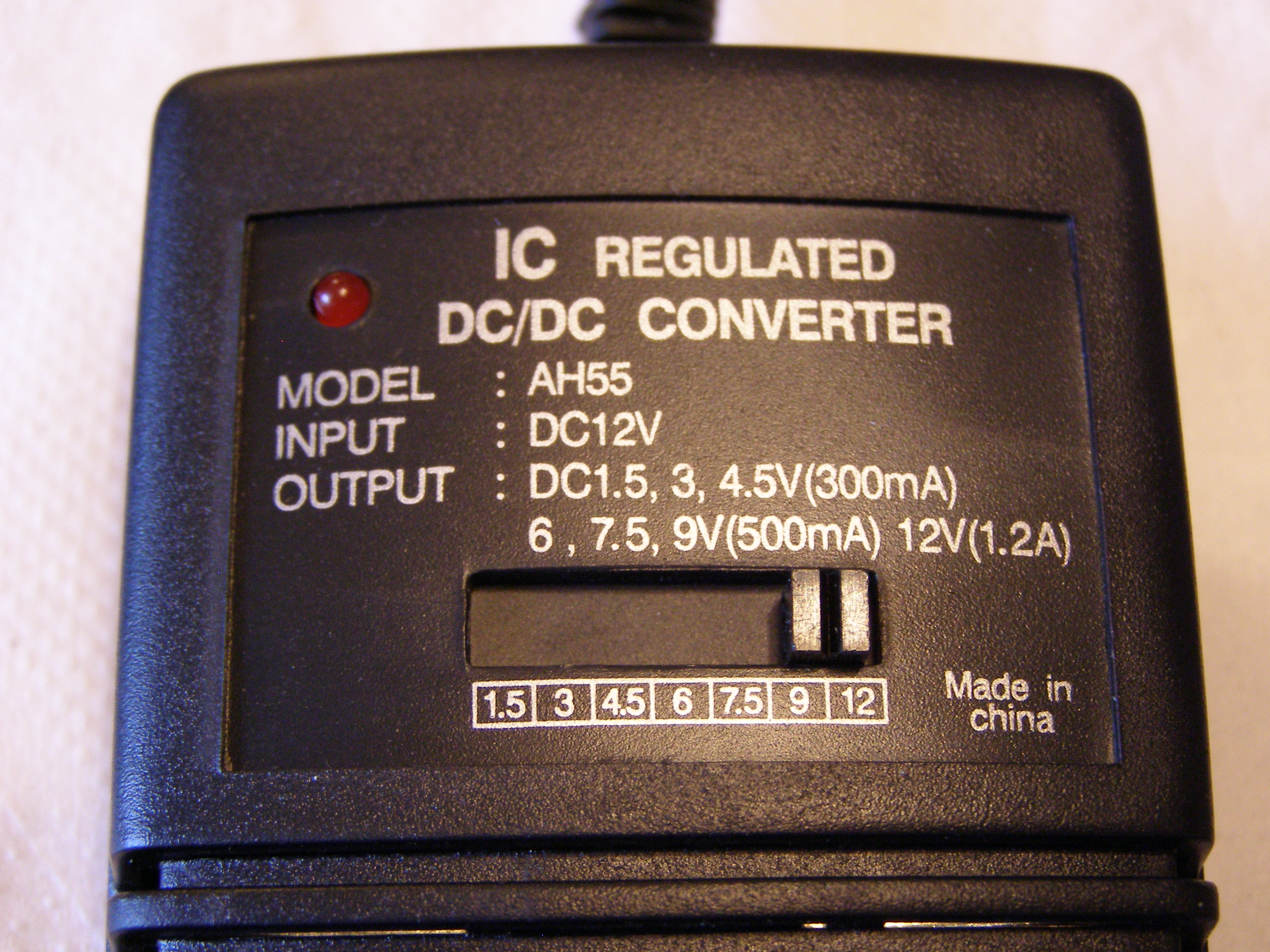
The motor is rated at 12 VDC and only draws 10 milliamps at no load. A 9v battery will run this but may slow down as the battery loses voltage. But you can use 9v batteries in parallel (two 9v batteries) to increase life. See the pictures for different power options.
Learn and Make Some Money
Most people use Apple's Quicktime Pro to make a series of pictures into a movie. It costs about 30 dollars but I hear it works well. I recently downloaded Google's Picasa 3 which also does timelapse movies and it is free. The timelapse video on the first page was created with Picasa 3.
To use Picasa select your timelapse pictures. Click on create at the top and select movie
in the drop down box and then from selection to use the pictures you first highlighted.
The transition style should be set to timelapse and you decide on the size and if you want an audio track to play with the timelapse video. Just under the transition style is slide duration which determines the number of frames per second. Preview your video at different settings to get the effect you want. Click create movie to save it when you are happy with the look of it.
Search the internet and places like You Tube and Vimeo for timelapse. There are experts that are willing to share information on how to set your camera up and take great pictures.
There are even some places like Shutterstock and Pond5 that pay you when you upload timelapse video and it is purchased by one of their customers.
To use Picasa select your timelapse pictures. Click on create at the top and select movie
in the drop down box and then from selection to use the pictures you first highlighted.
The transition style should be set to timelapse and you decide on the size and if you want an audio track to play with the timelapse video. Just under the transition style is slide duration which determines the number of frames per second. Preview your video at different settings to get the effect you want. Click create movie to save it when you are happy with the look of it.
Search the internet and places like You Tube and Vimeo for timelapse. There are experts that are willing to share information on how to set your camera up and take great pictures.
There are even some places like Shutterstock and Pond5 that pay you when you upload timelapse video and it is purchased by one of their customers.